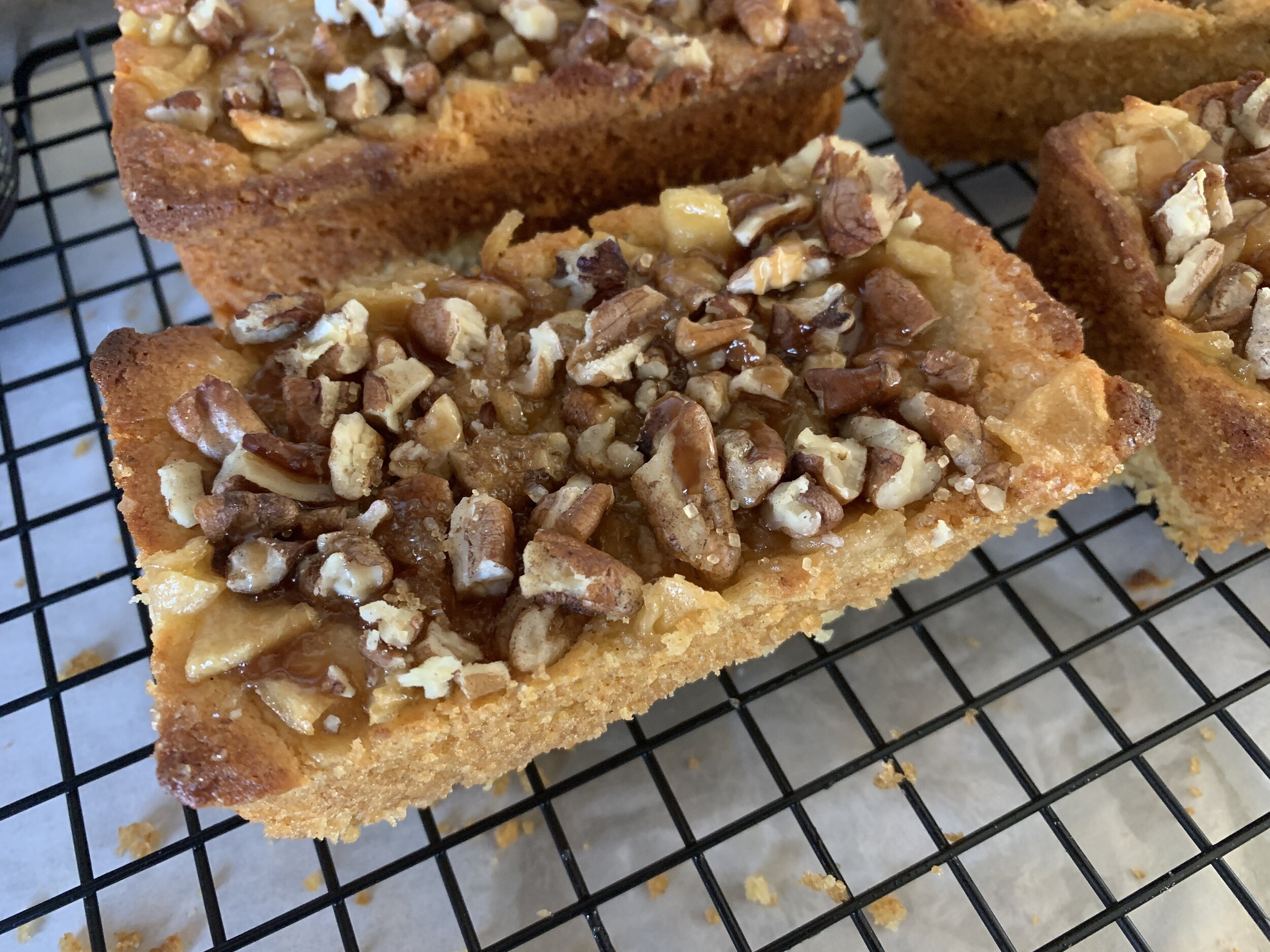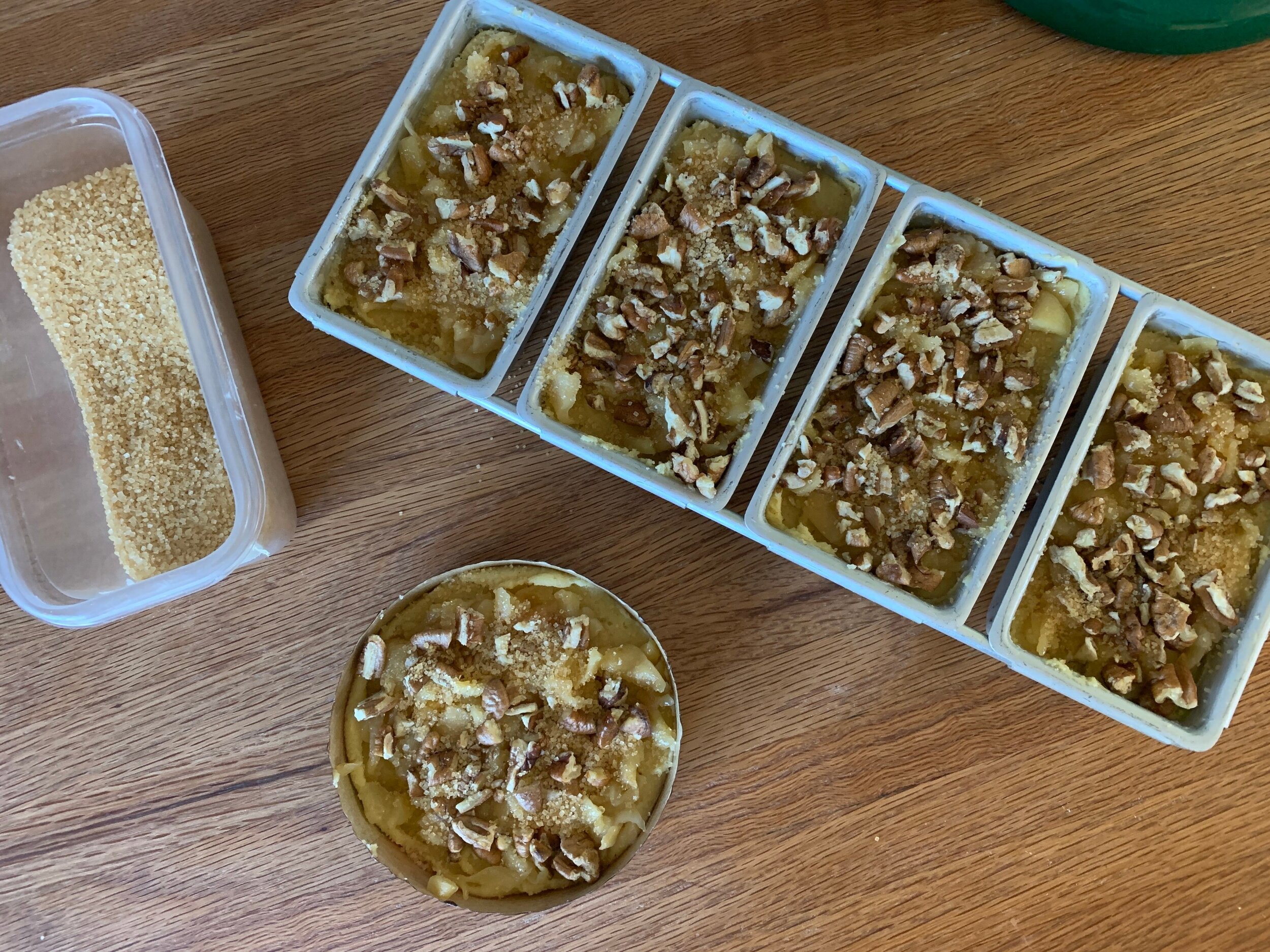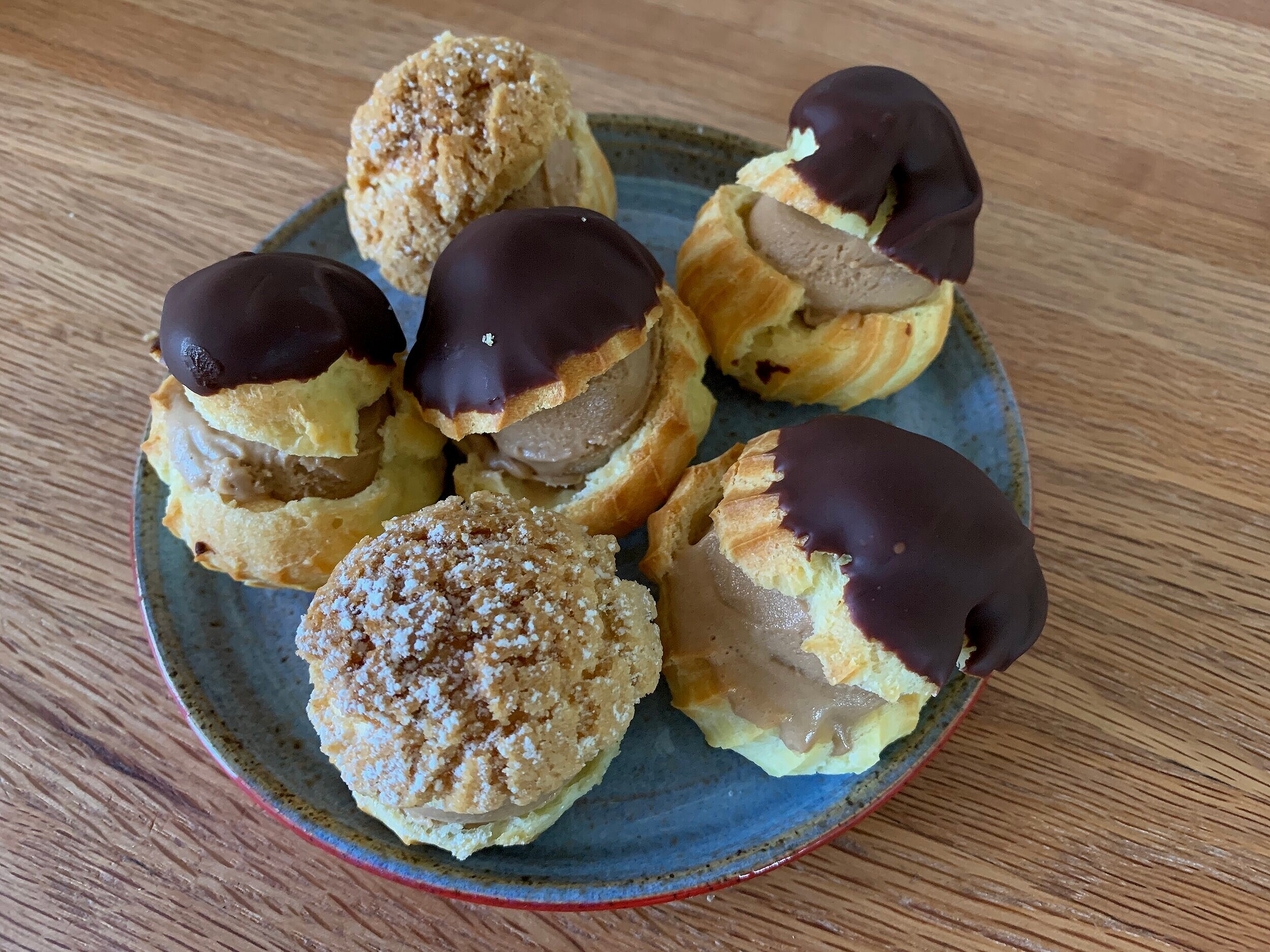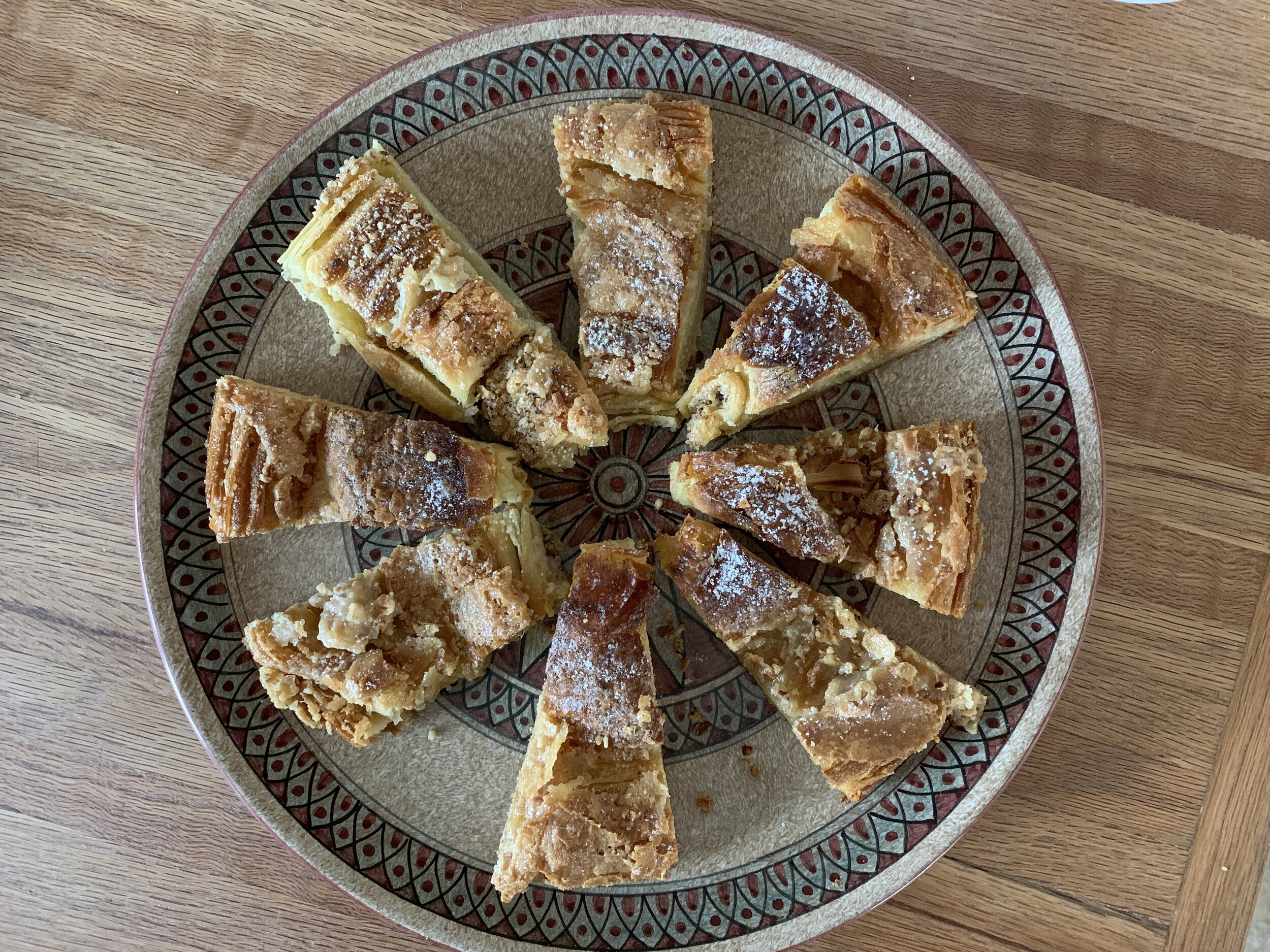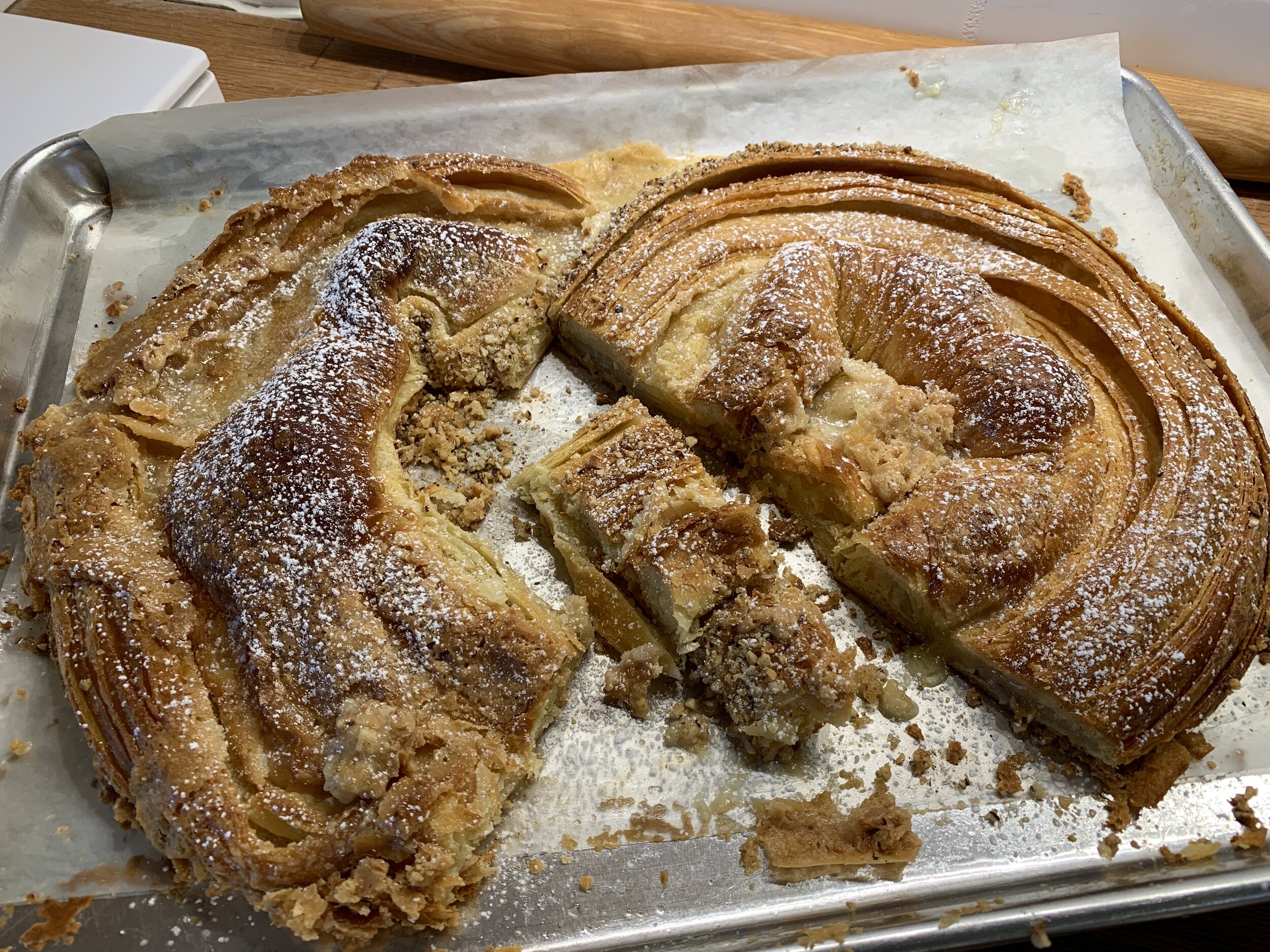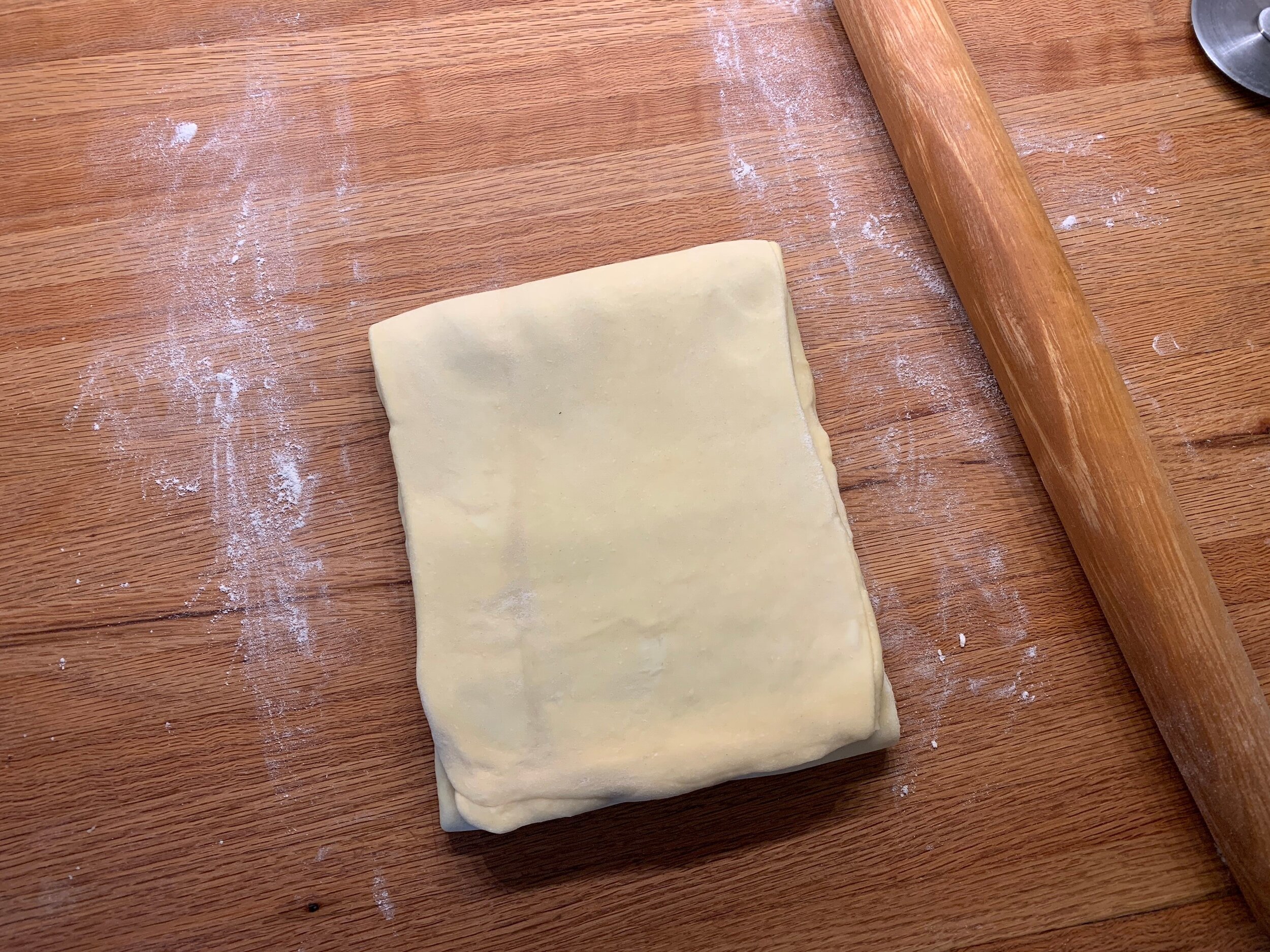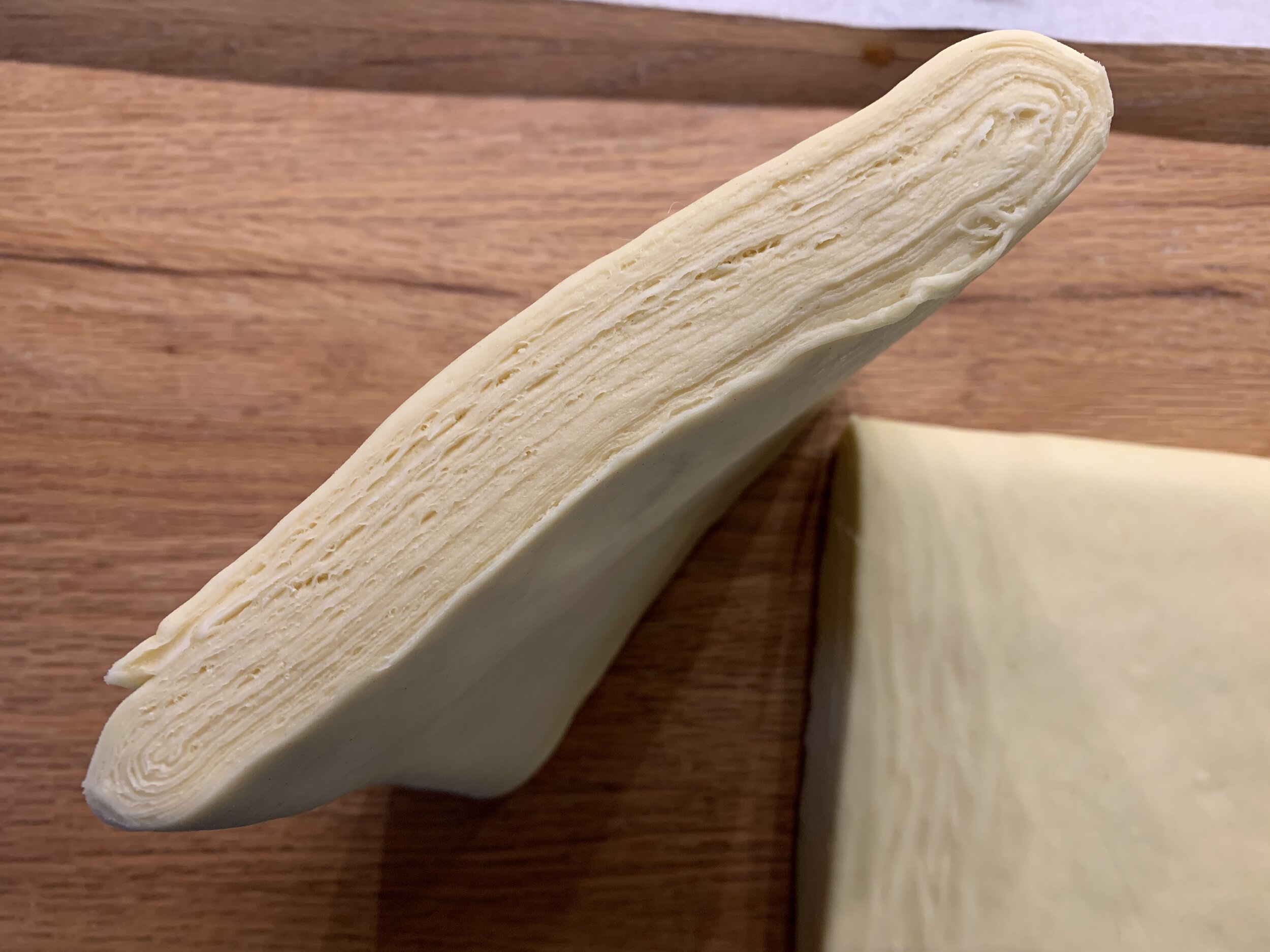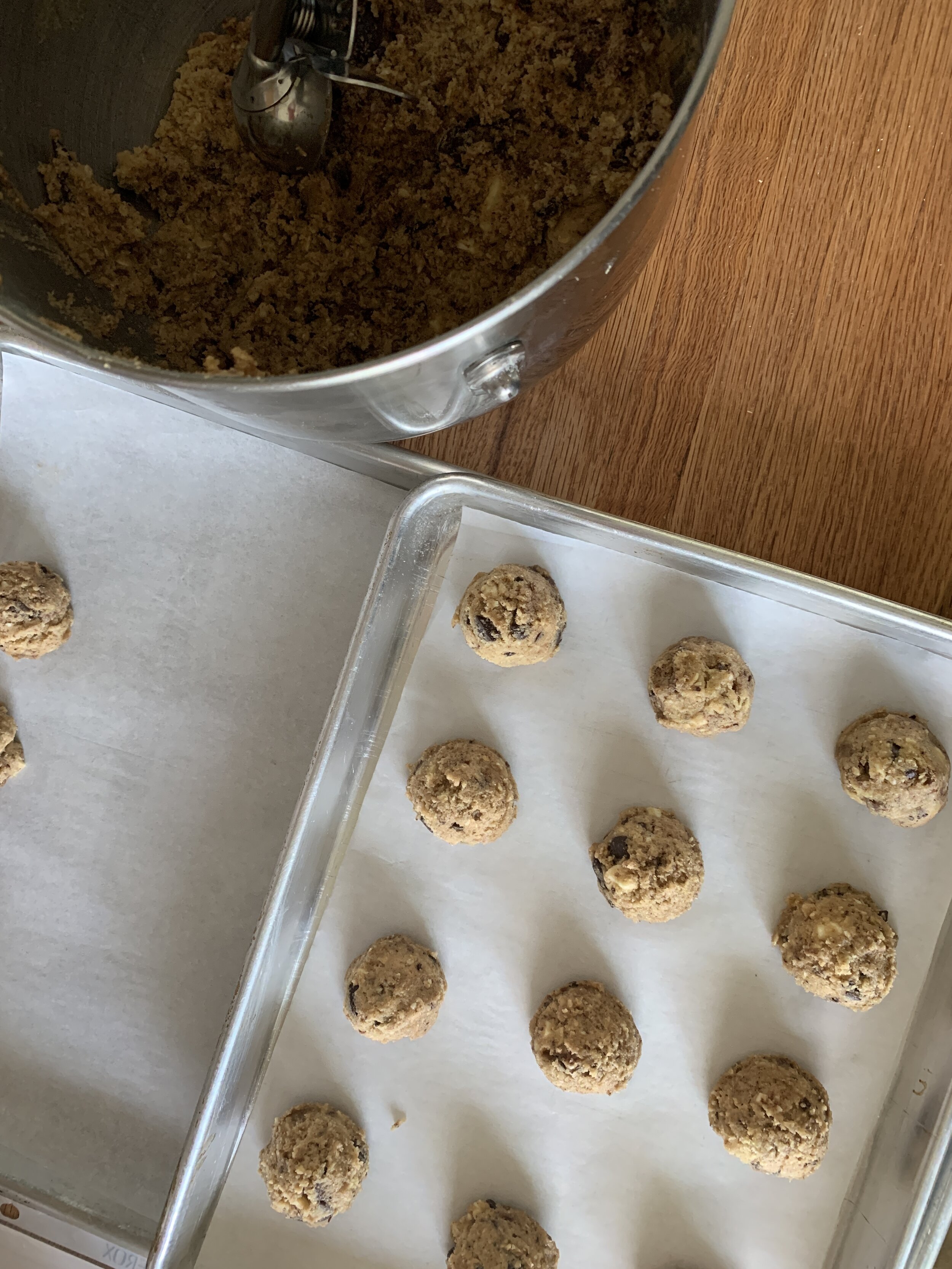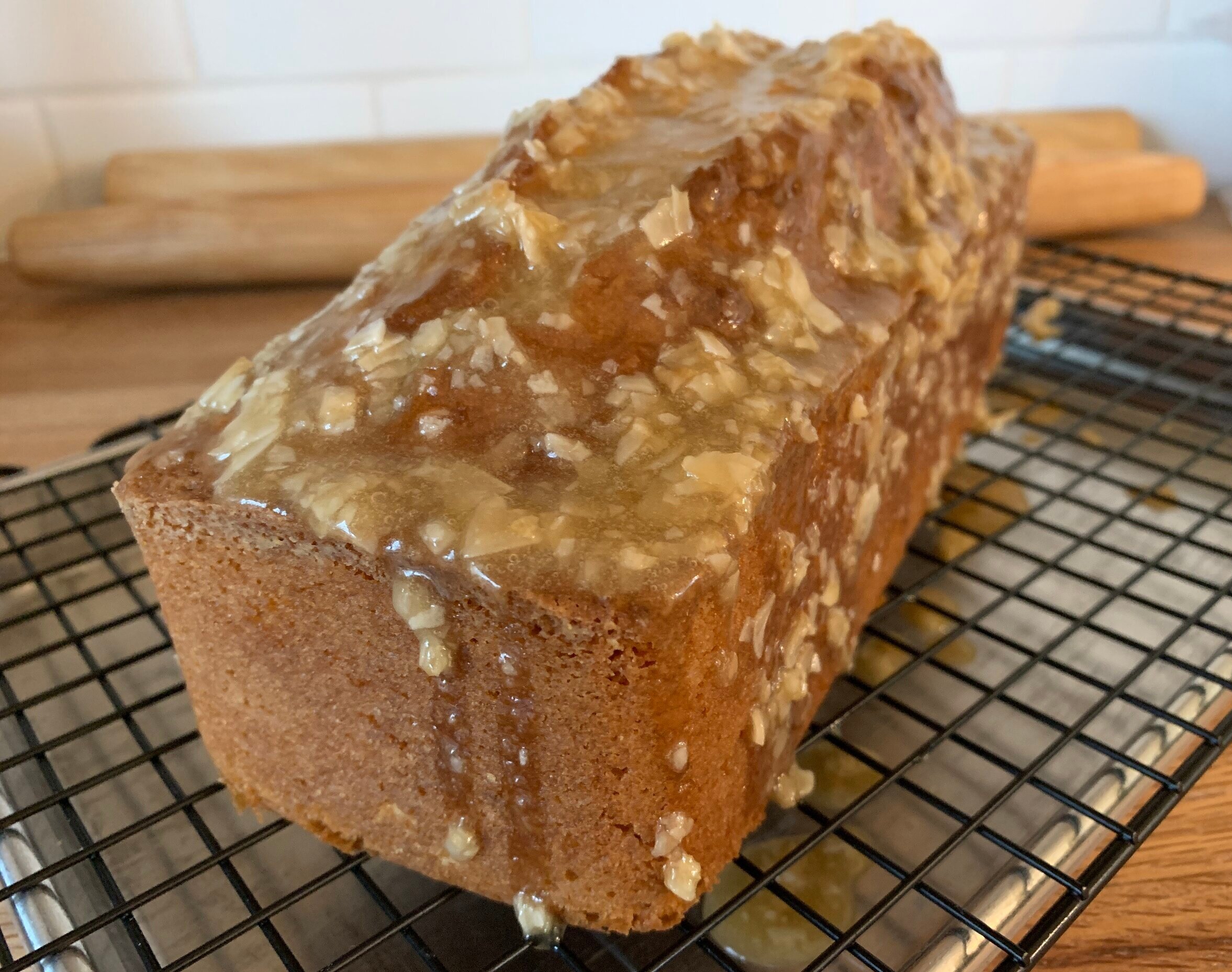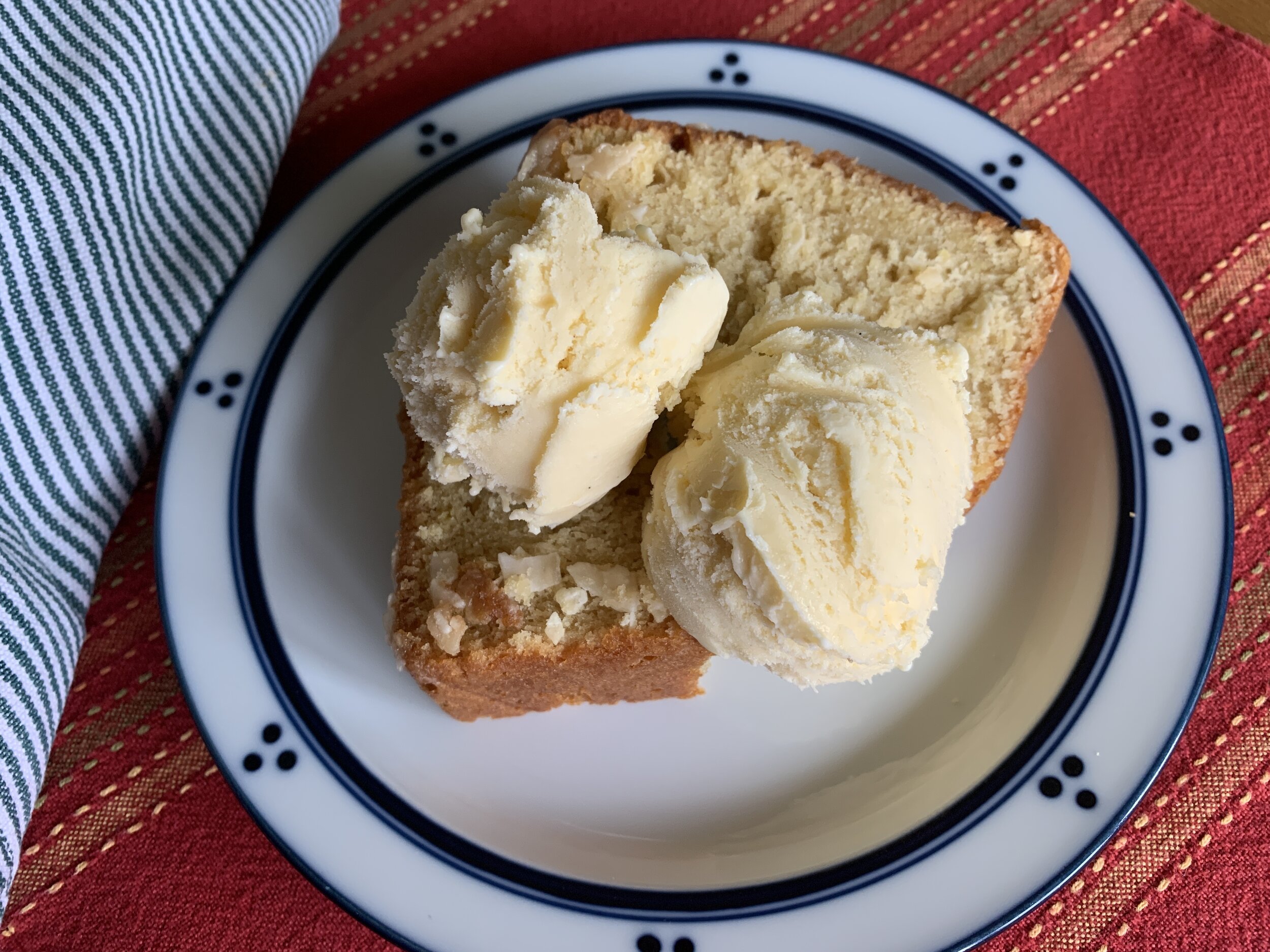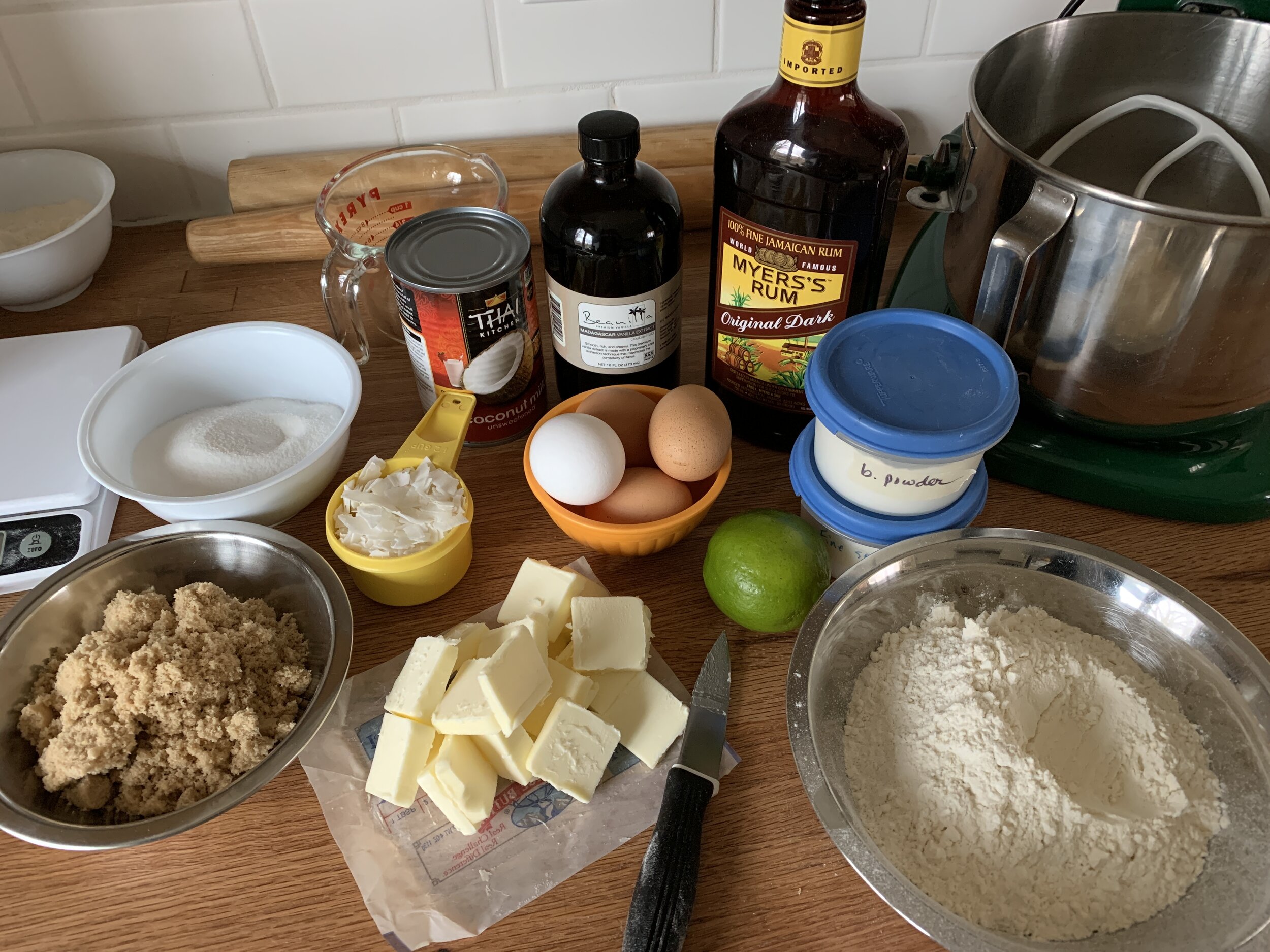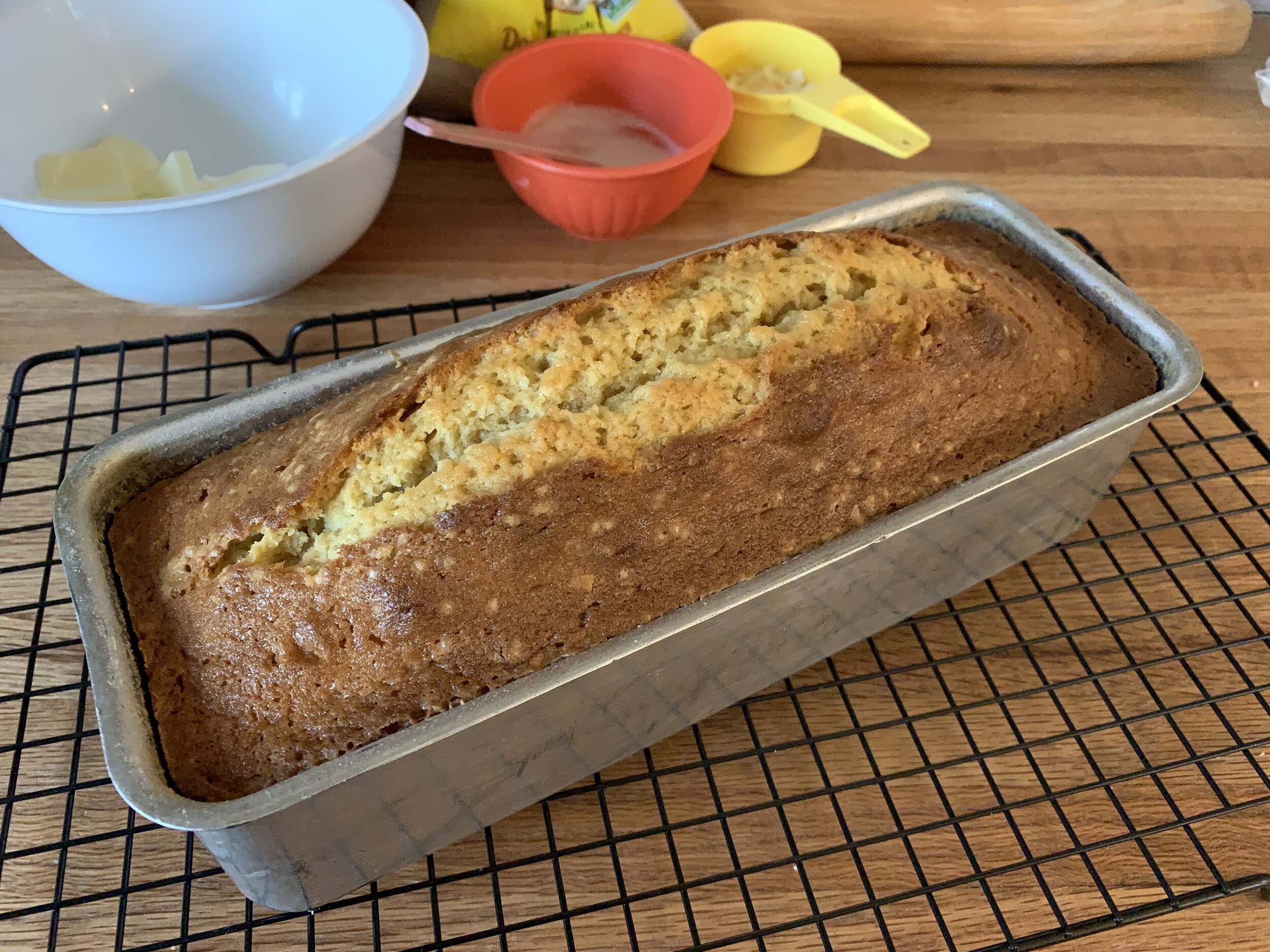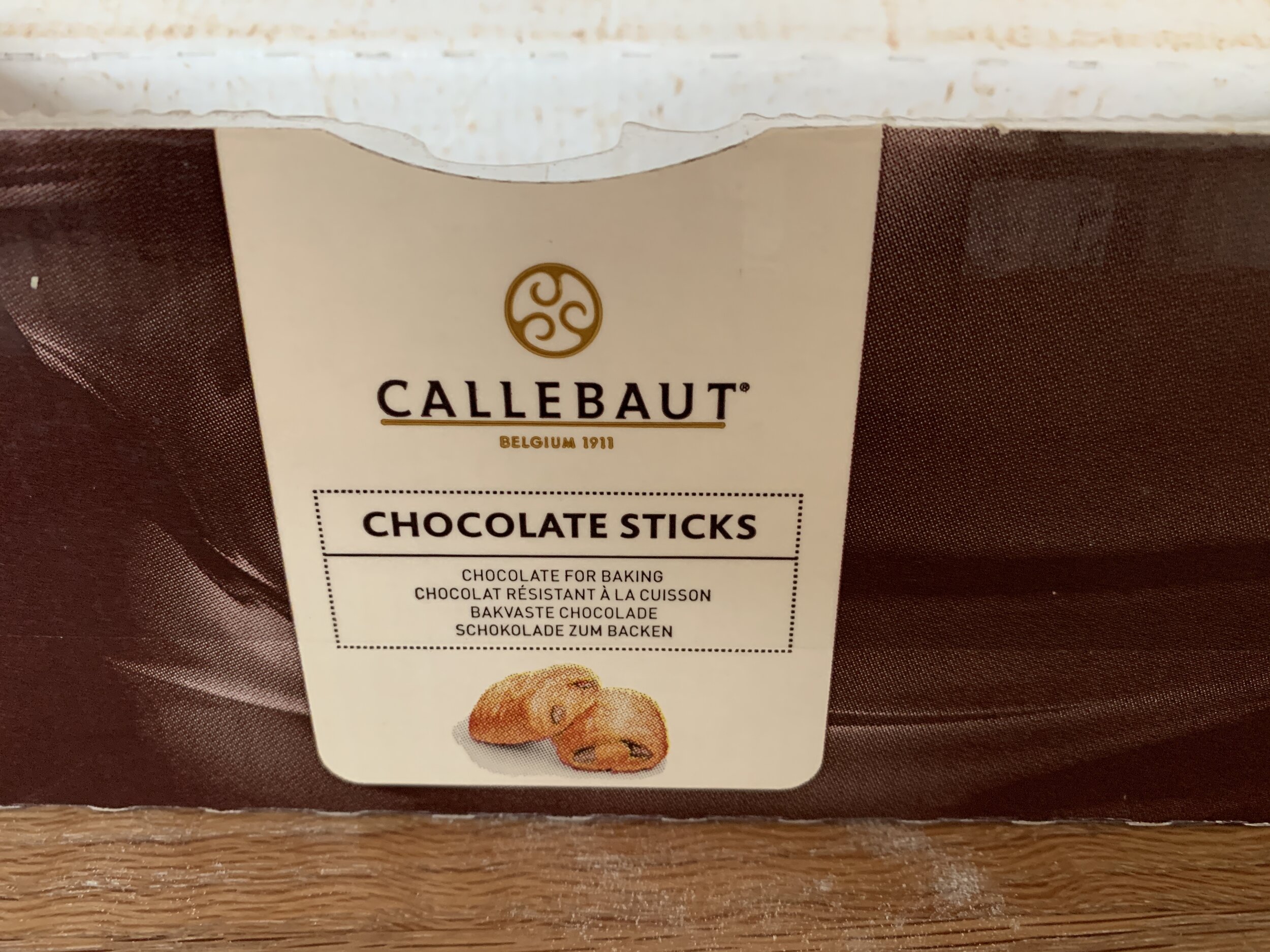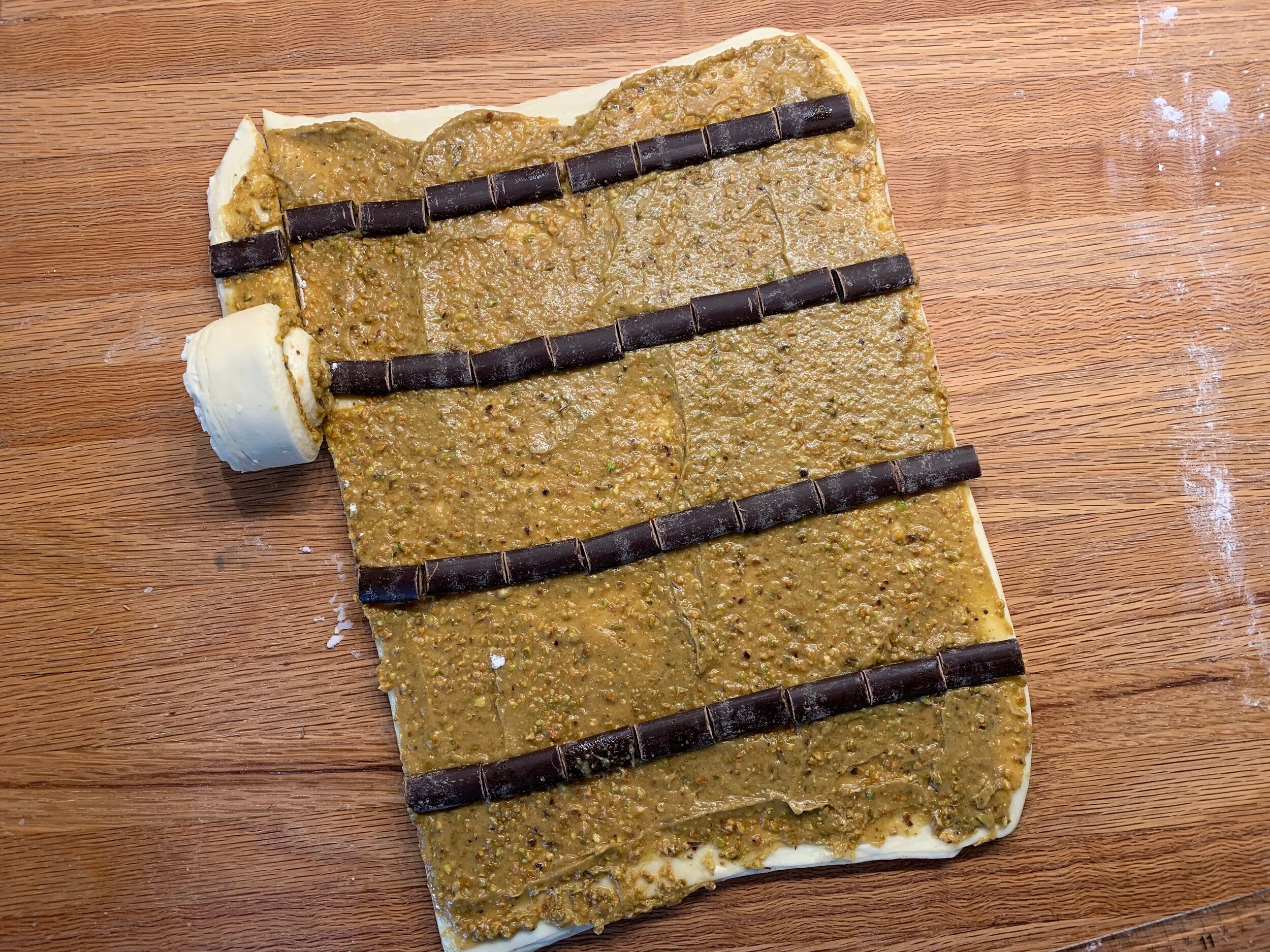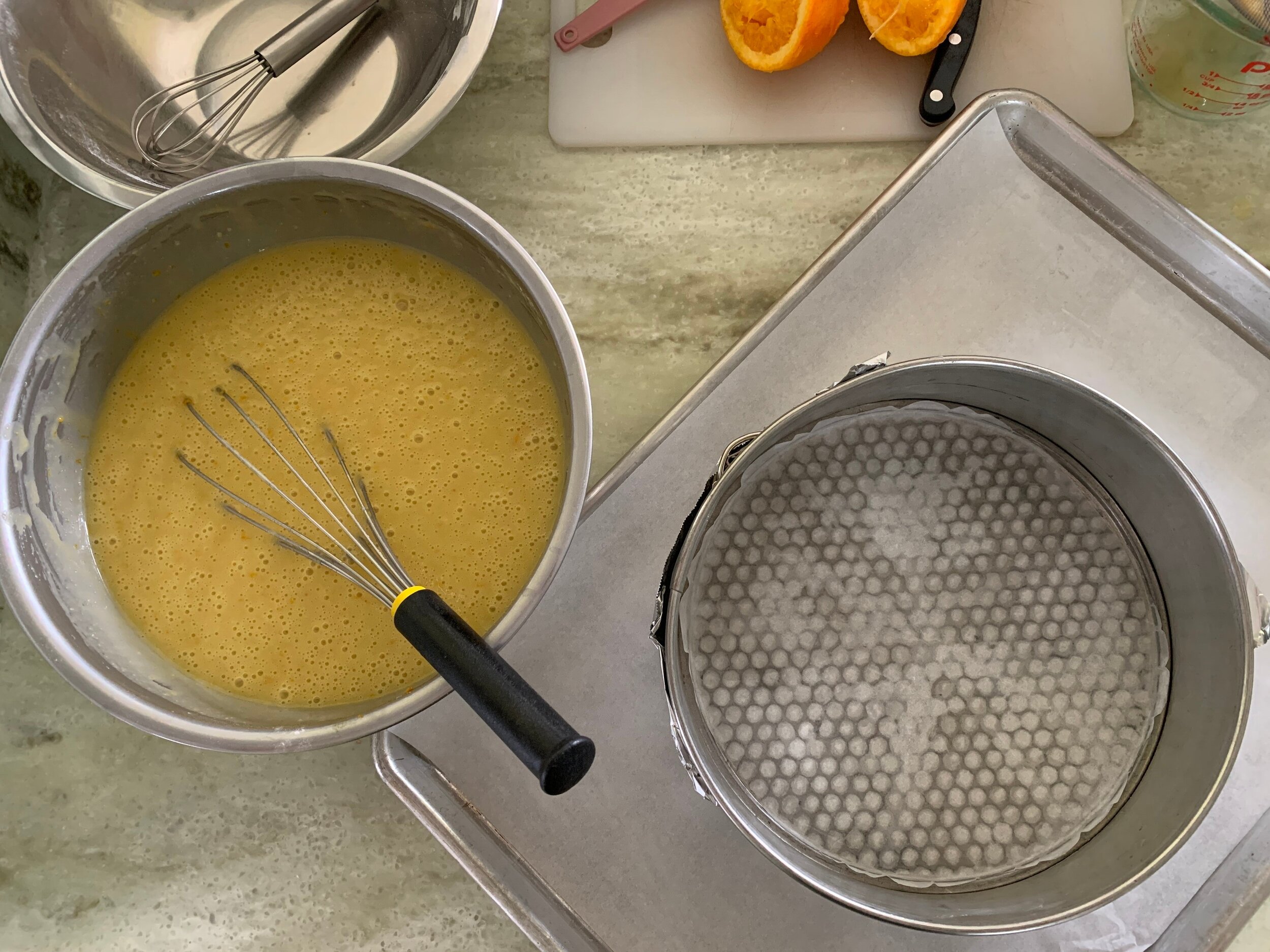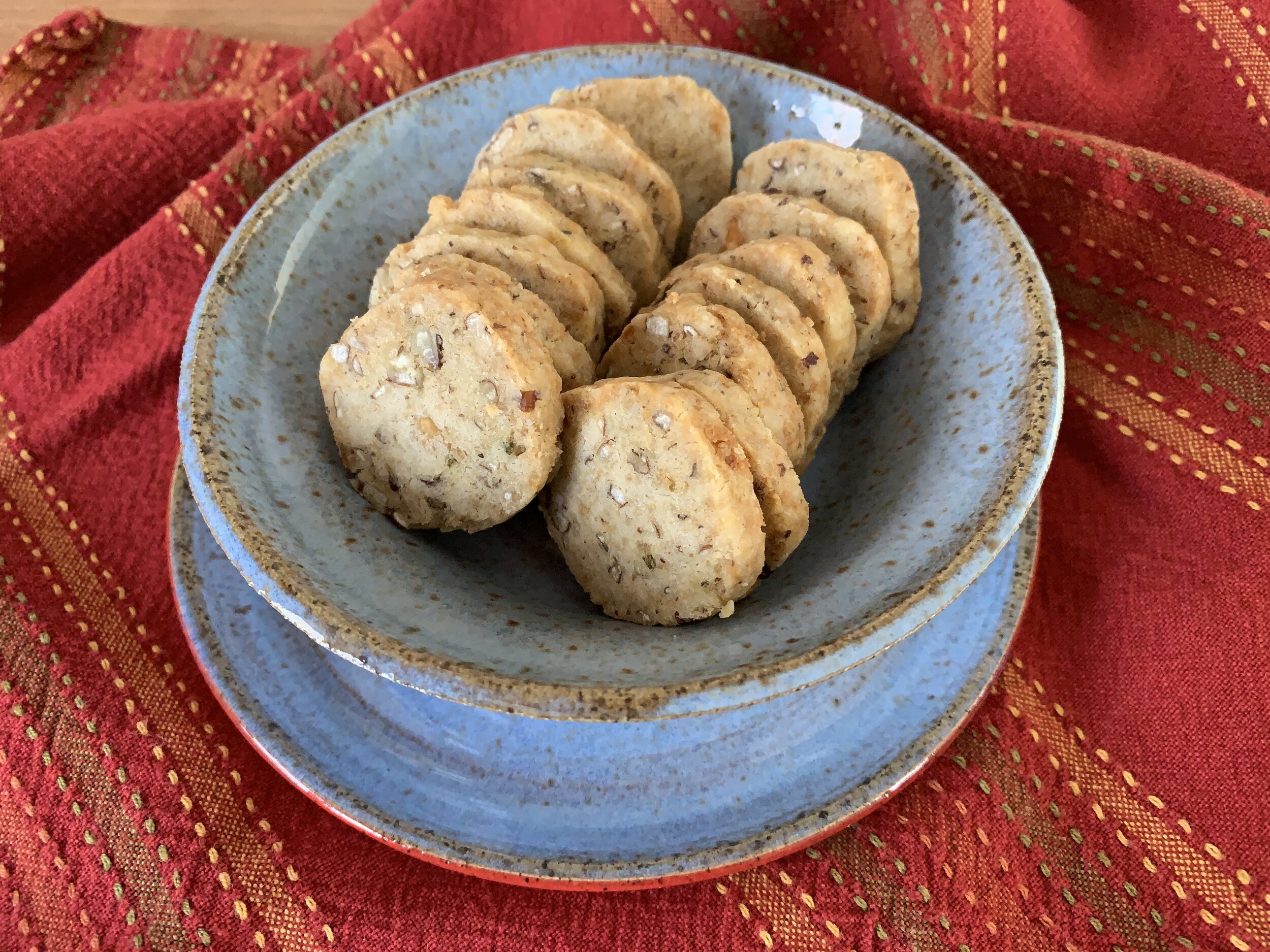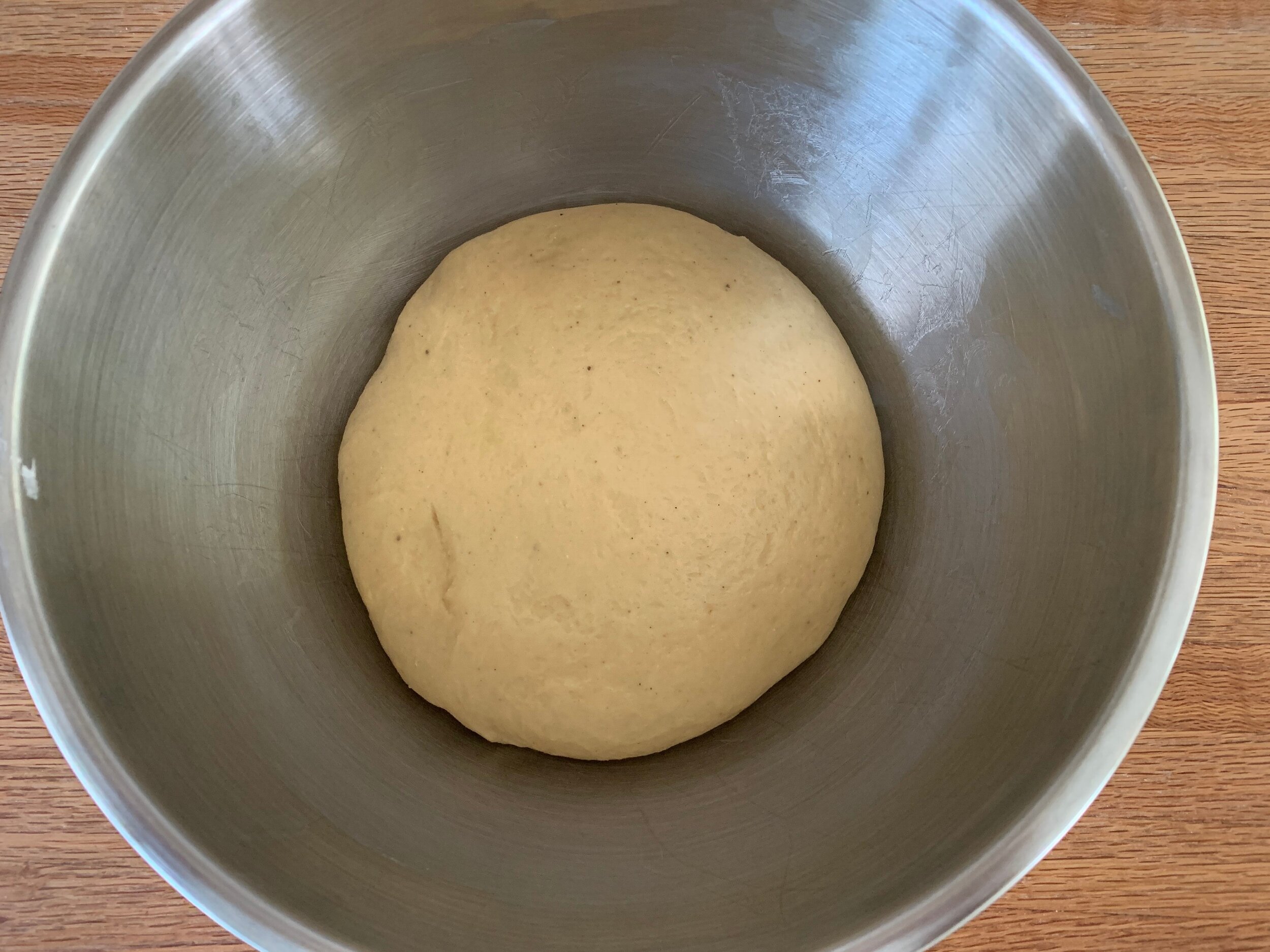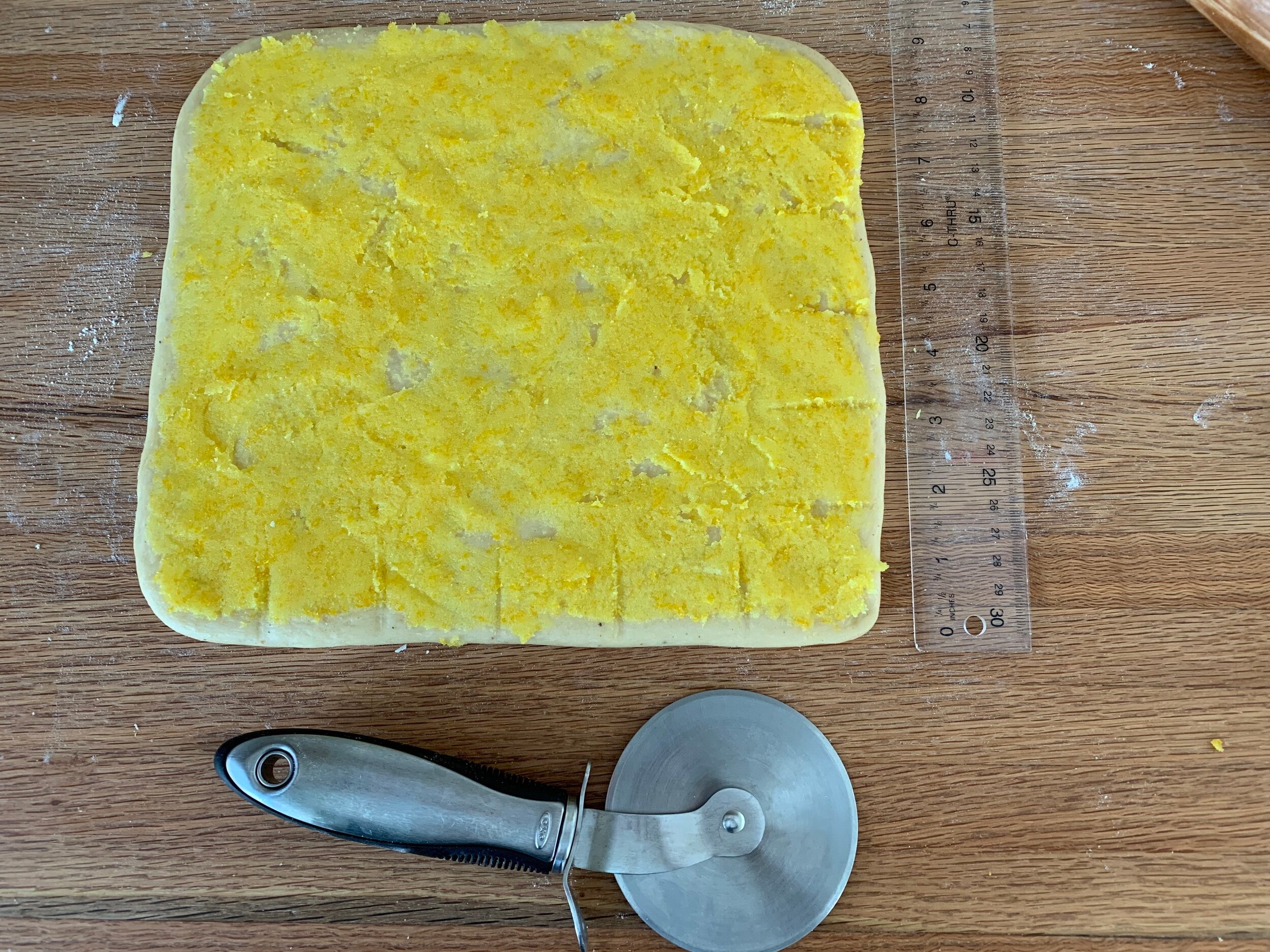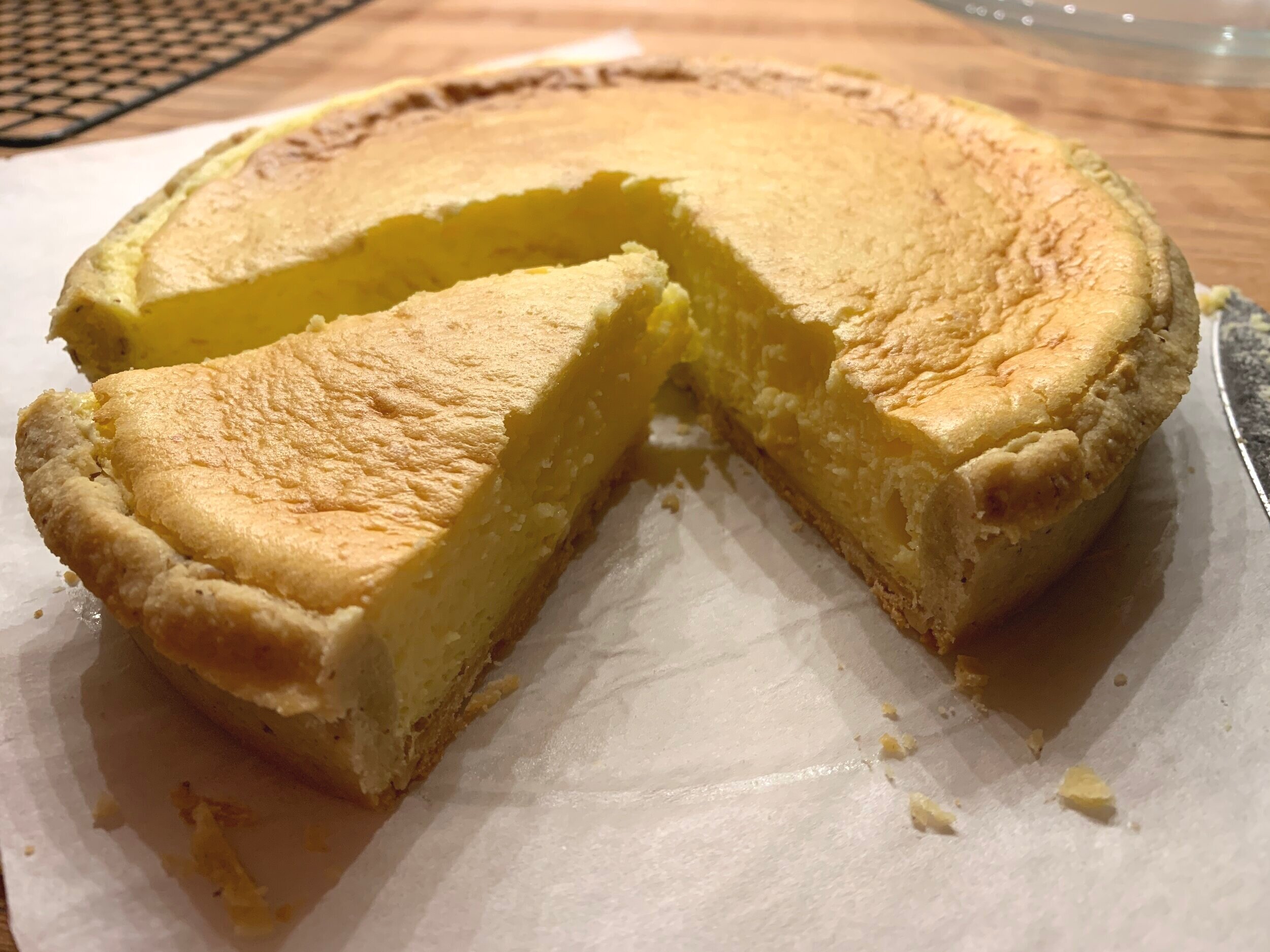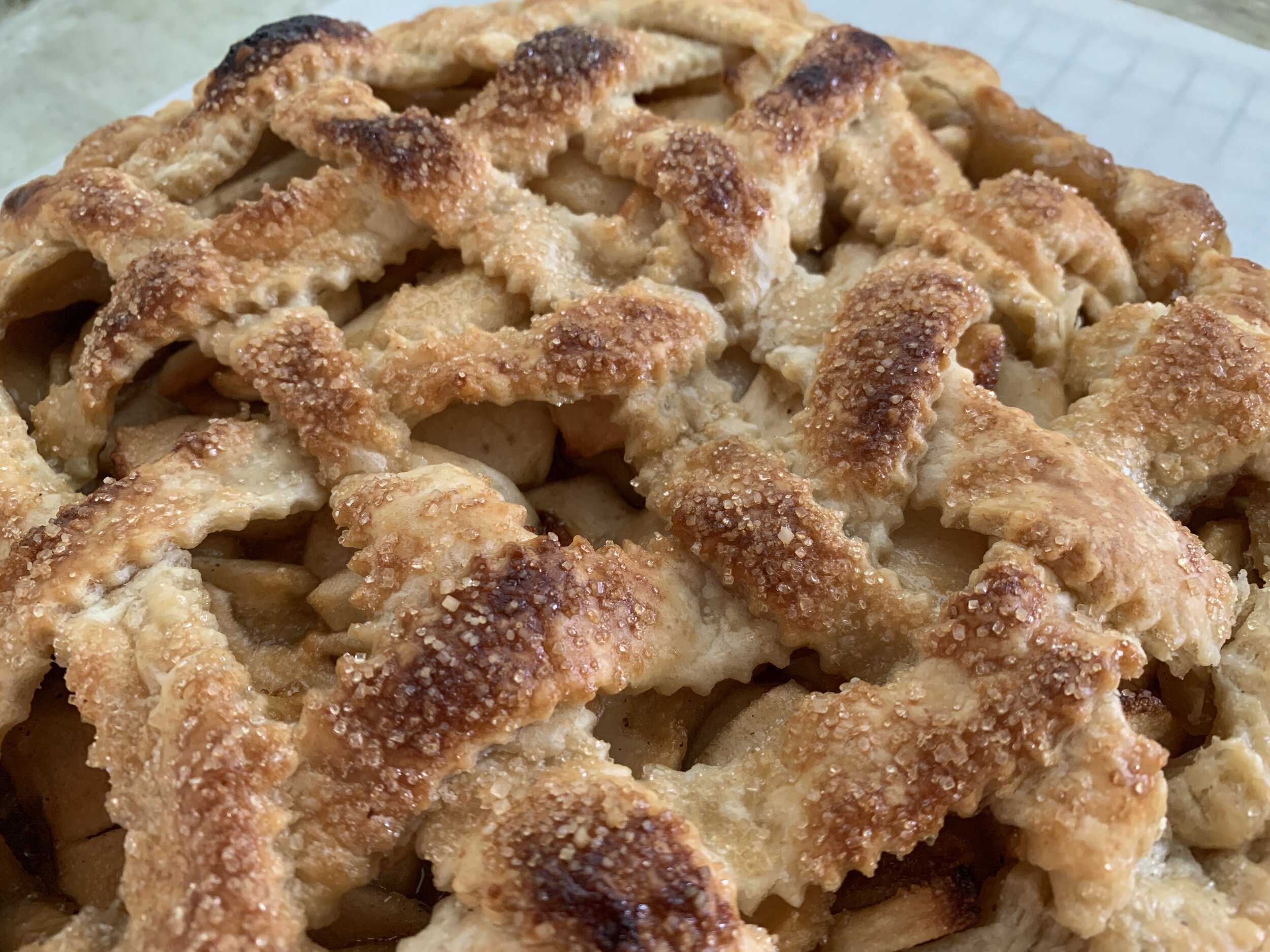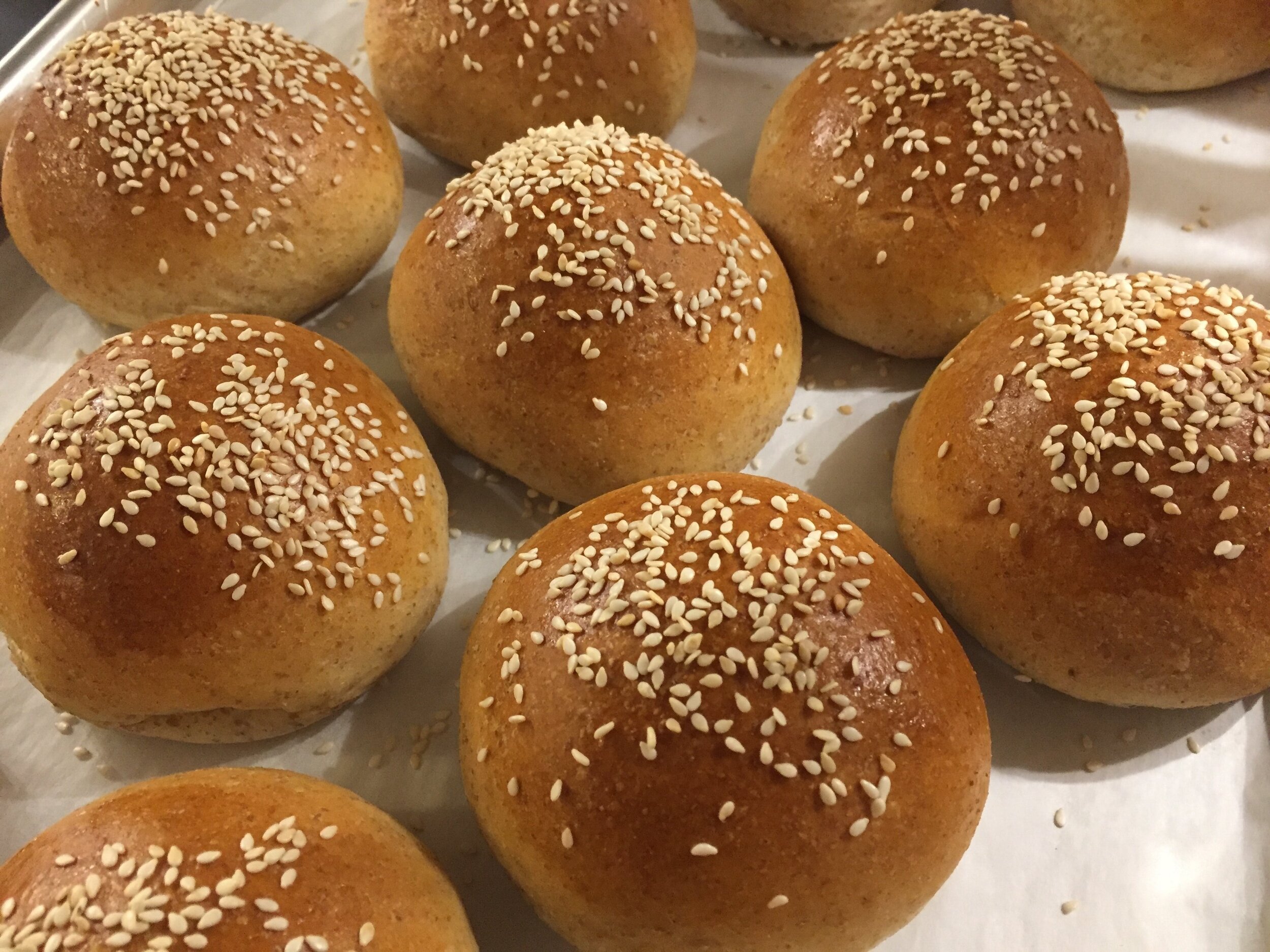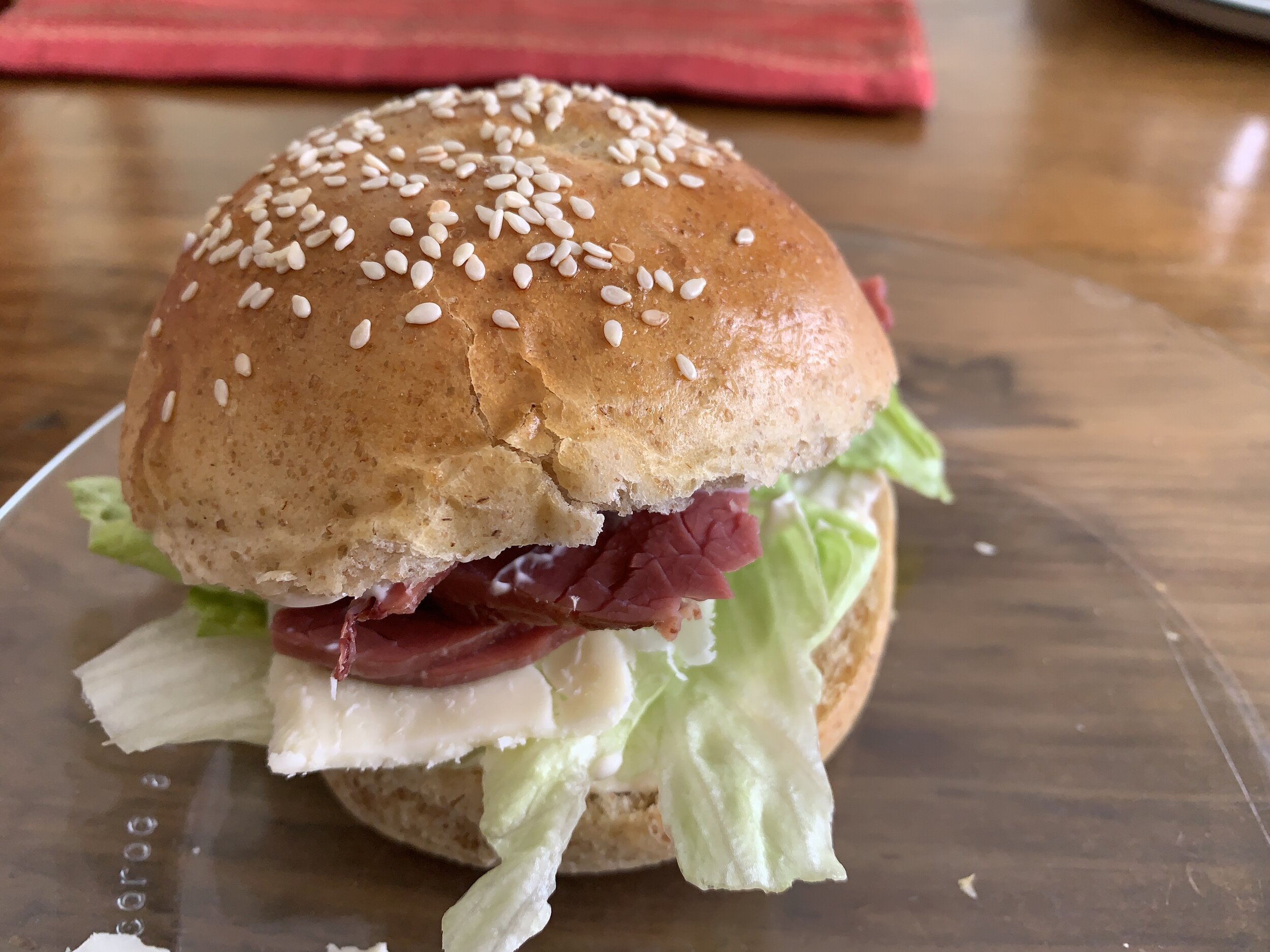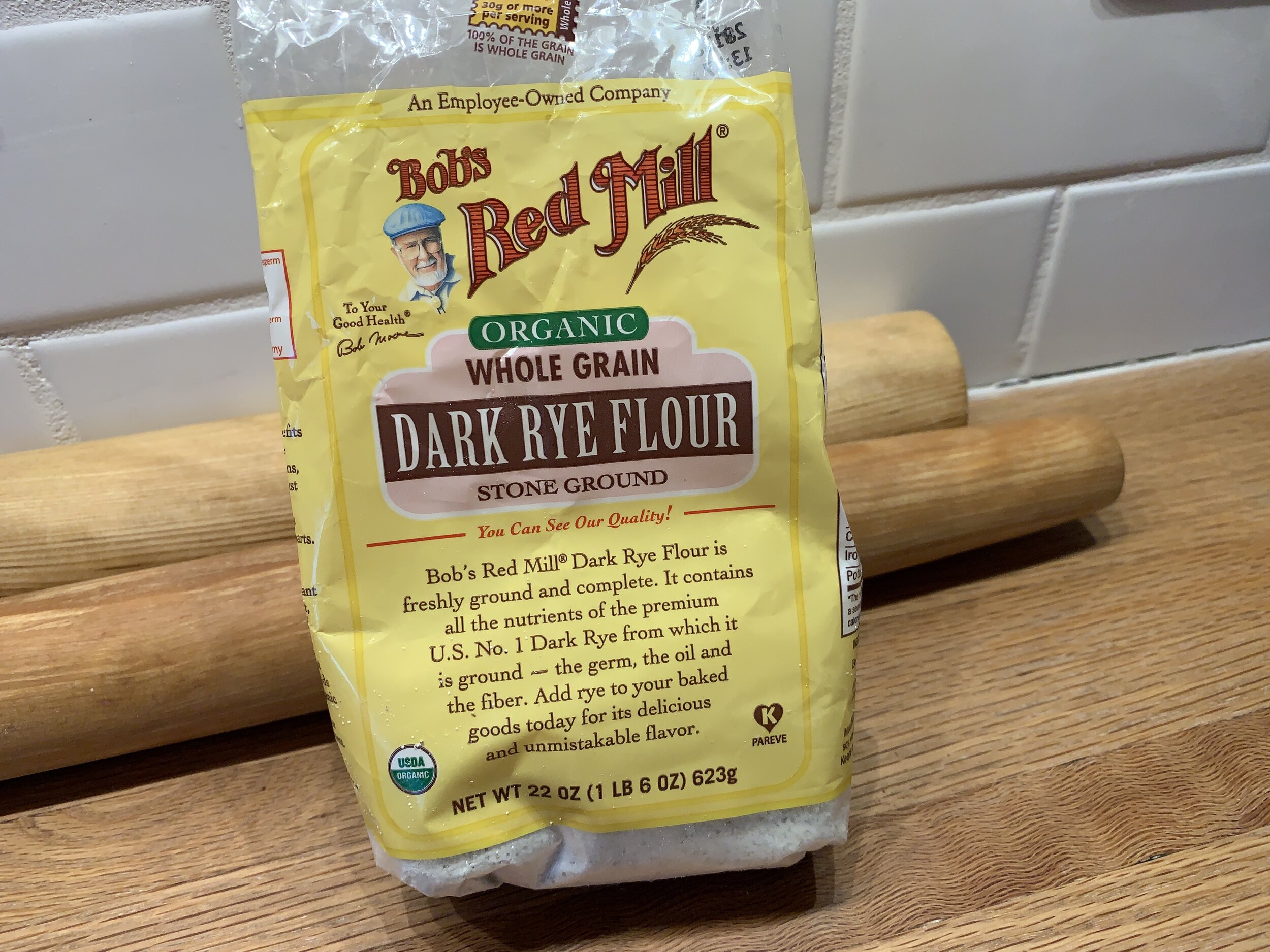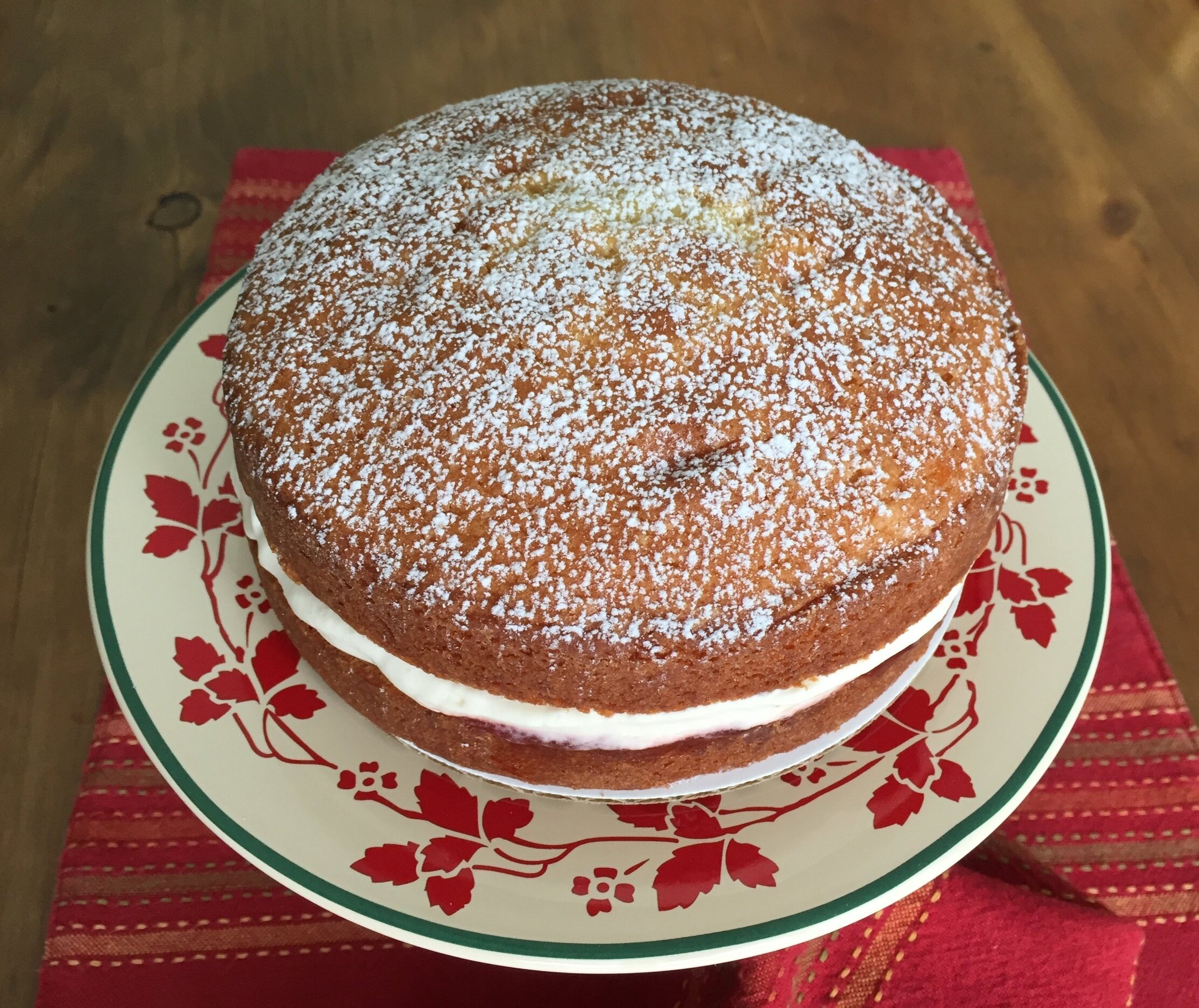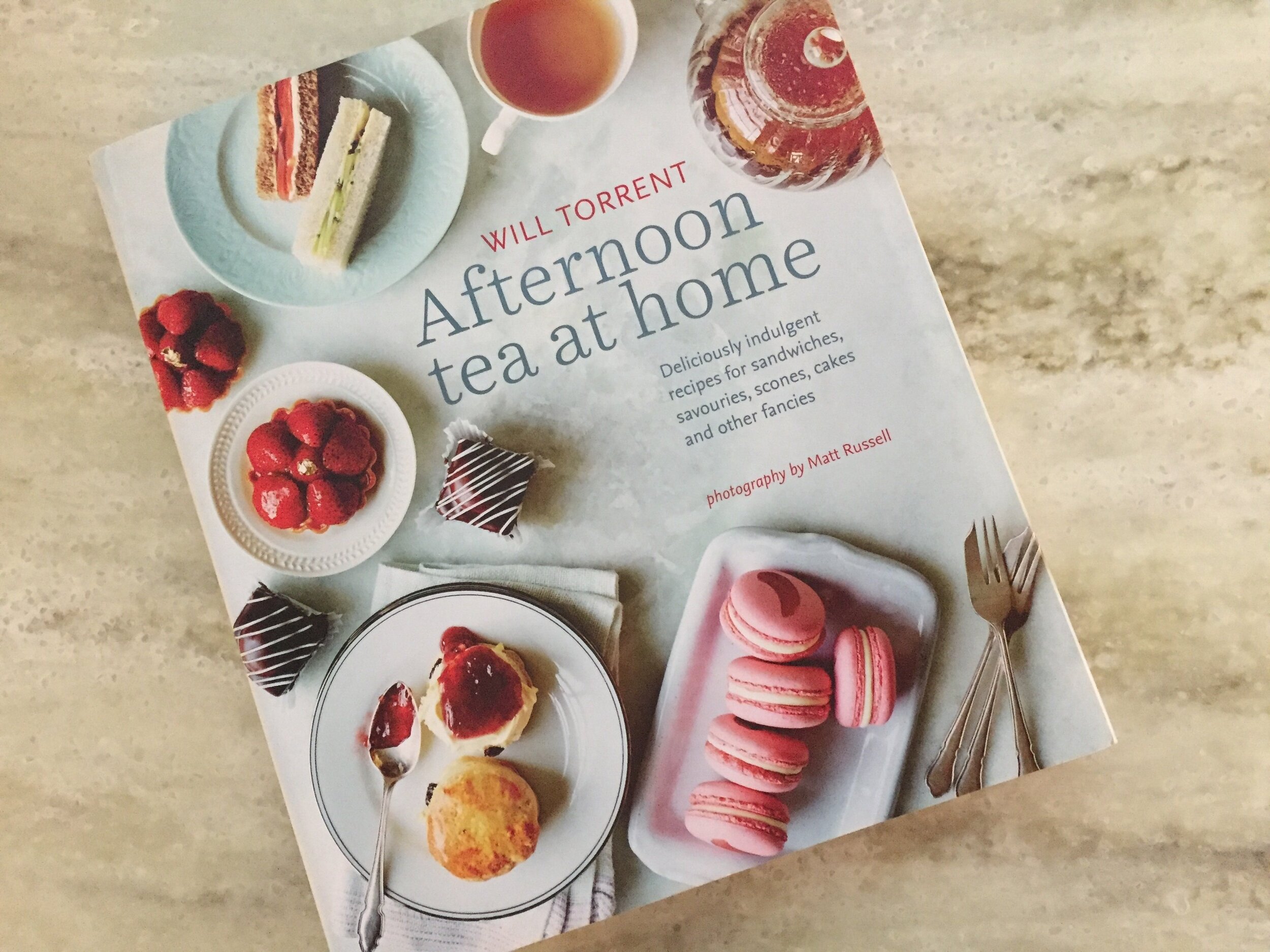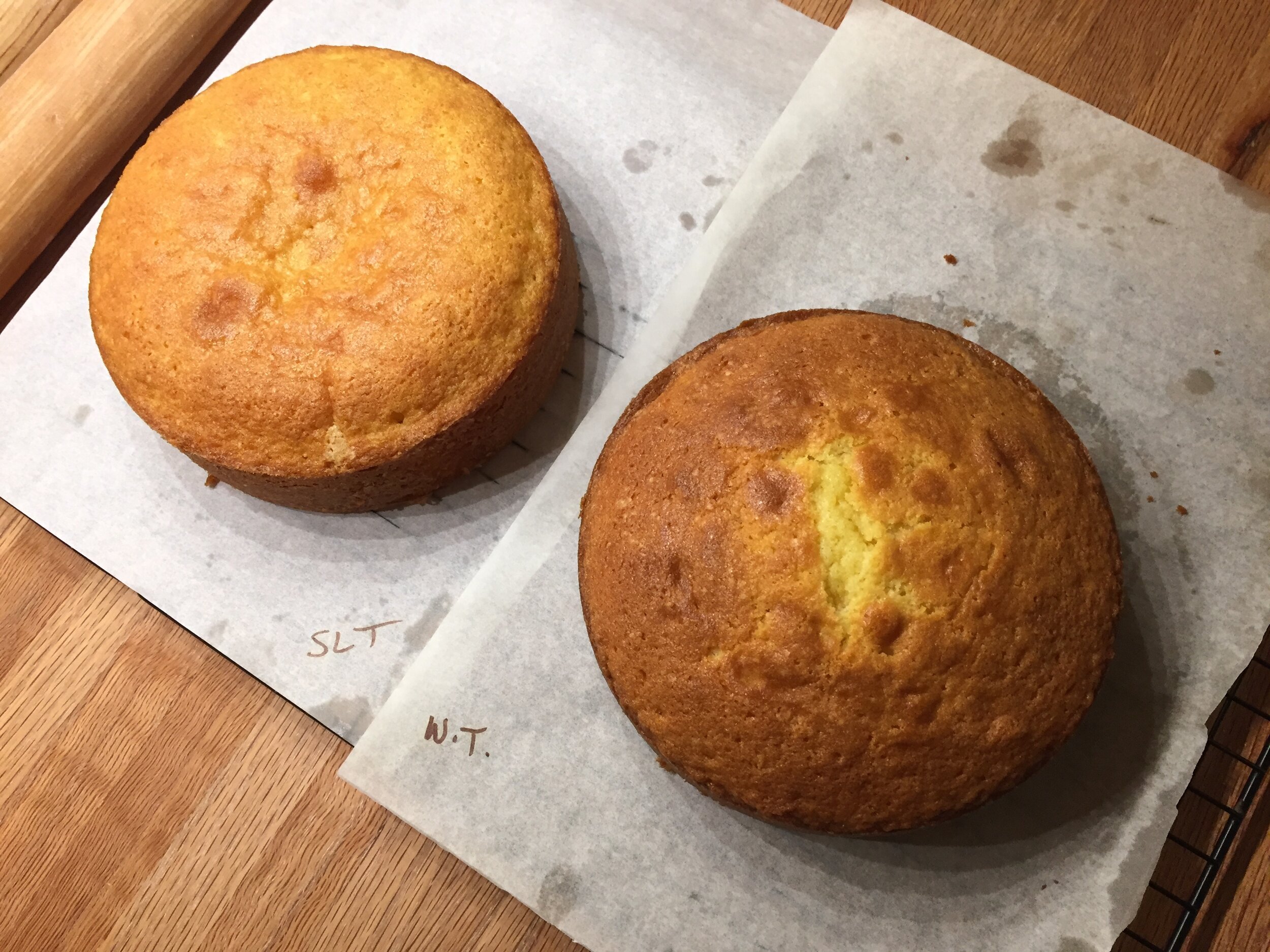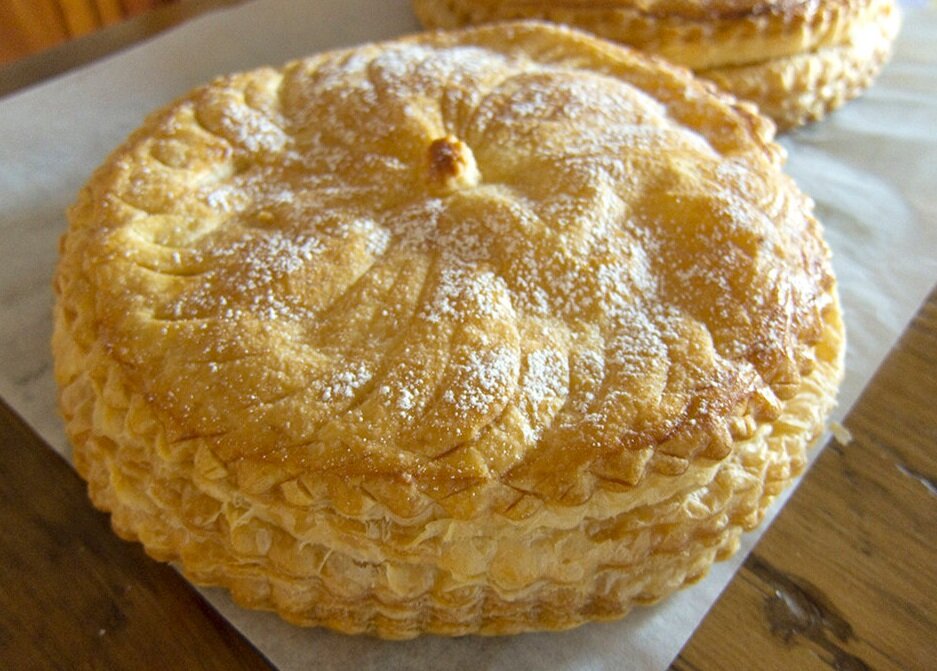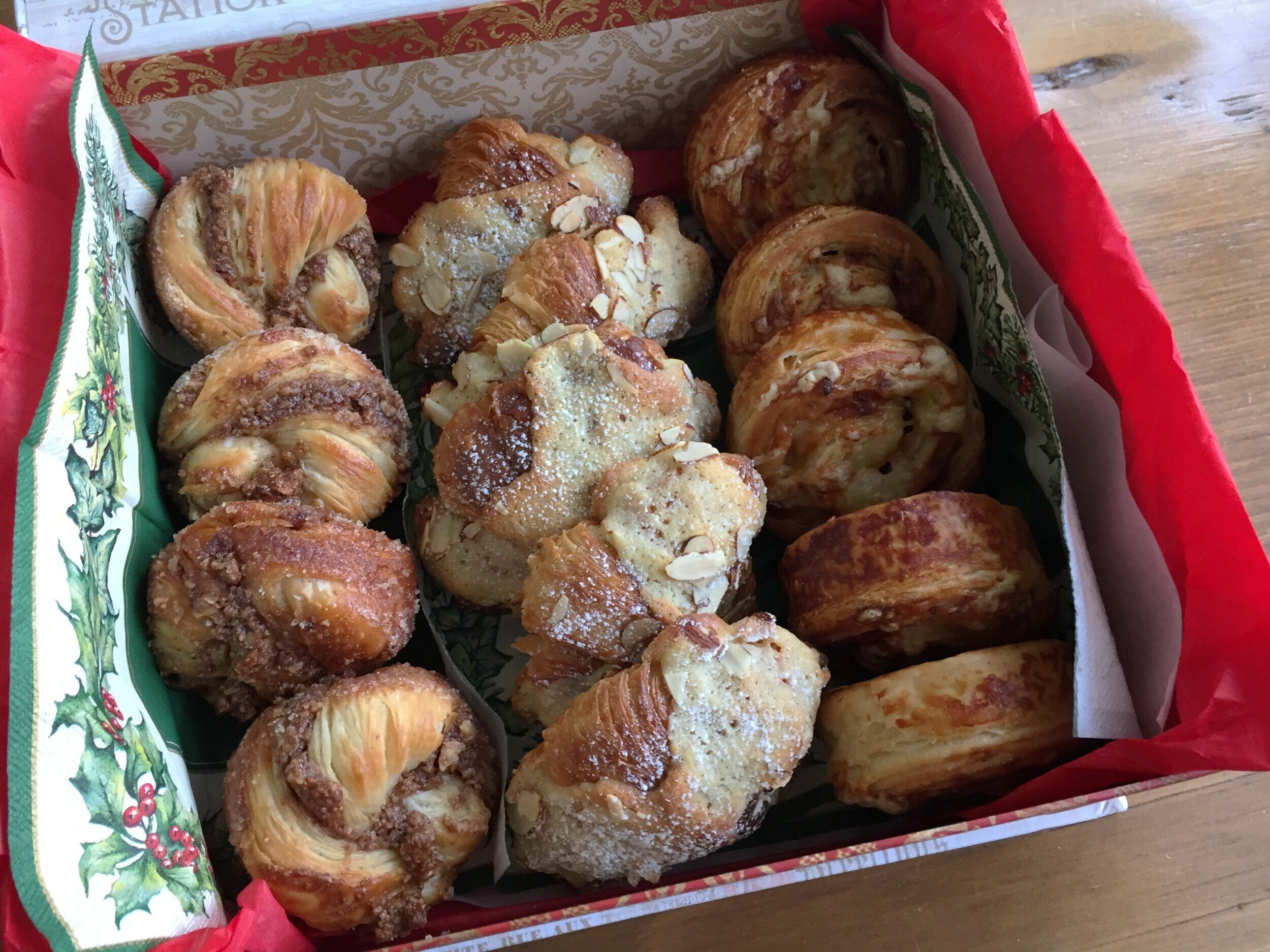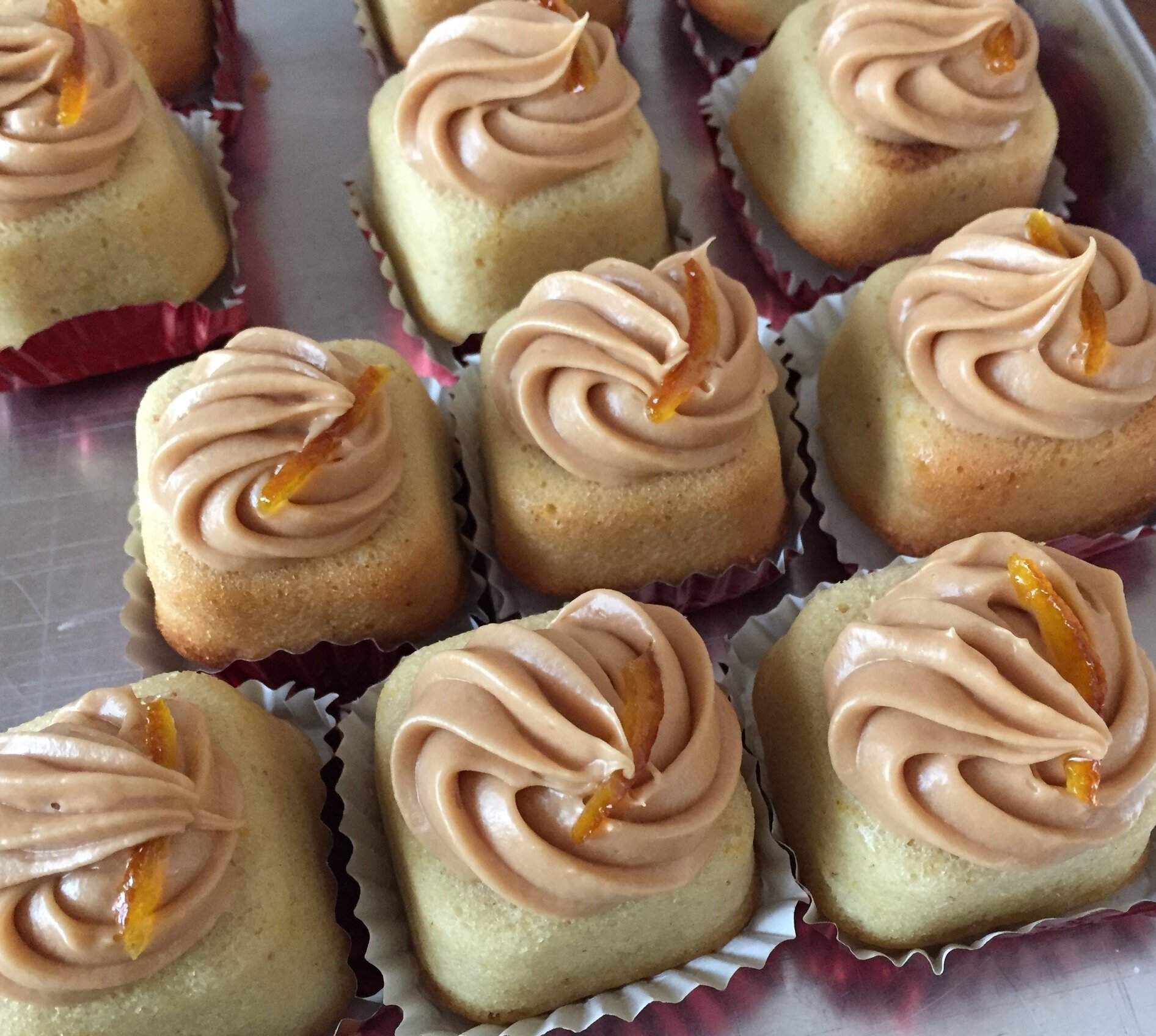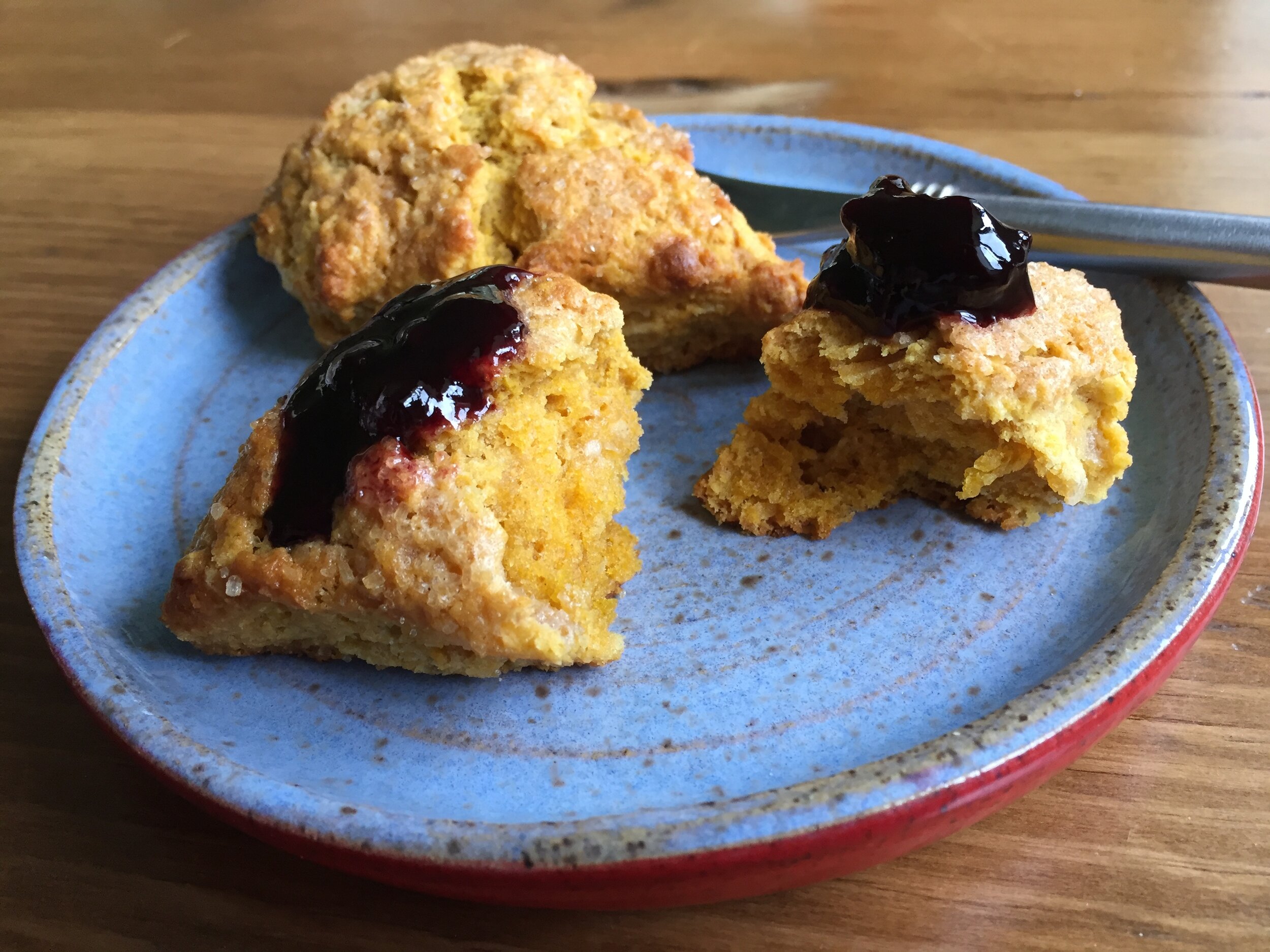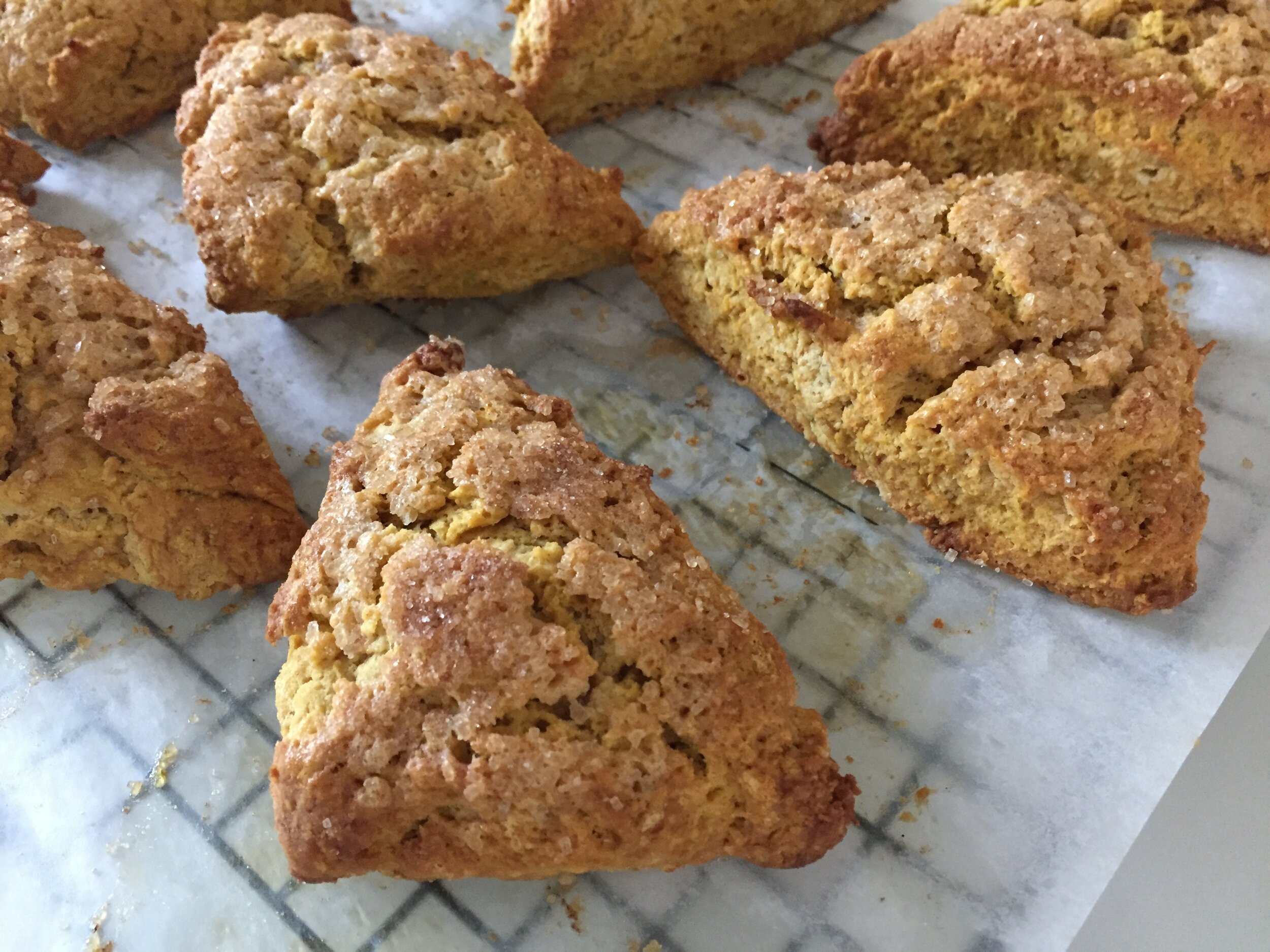Swedish sand cake (sandkaka) - apple pecan version
/This one’s an eye opener folks. As I continue to work toward using up some less frequently needed ingredients I have on hand, potato flour is one that prompted further investigation. I originally bought it with an eye to making potato dinner rolls (which I did!), but of course I had some left. Sooooo . . . . . now what?
I did some online research and found this Swedish sandkaka recipe compliments of Jennifer Rao and Around the World in 80 Cakes. It also happens to be gluten free for those who are interested in that sort of thing.
I realize my flavor profile speaks more of autumn than the bursting out of spring but wouldn’t you know I had some sliced apples in the freezer left over from a mid-winter apple tart project? Vermont boiled cider and rum also remain at the ready, a combo I’m becoming very fond of.
Typically baked in a standard loaf pan, I opted to use my 4-well mini loaf pan (buttered) for a more petite cake offering. After a bit of calculation I figured the batter would fill 4 minis with some left for a 4” round panettone paper mold (no buttering needed here!).
Planning ahead: as you prep for this one, you want your eggs and butter at room temperature. I’m adding a mix of warming spices too so I shelled about 15 green cardamom pods then lightly toasted and finely ground the cardamom seed. It’s all about being ready, right?
I also diced my thawed apple slices ( I had the equivalent of about a medium apple’s worth) and sautéed them in a bit of butter and sugar then added a tablespoon each of rum and boiled cider until reduced and the apples were golden and caramel-y; set aside until ready. I toasted up ~80 g pecans, then cooled and coarsely chopped them.
Heat your oven to 350ºF.
For the batter: sift 173 g / 1 cup potato flour and 2 teaspoons baking powder into a medium bowl. Add 3/4 teaspoon ground coriander, scant 1/2 teaspoon ground cardamom, 1/4 teaspoon cinnamon, 1/4 tsp salt, and 1/8 teaspoon allspice. I also threw in a large pinch of vanilla powder just because I could.
In the bowl of a stand mixer fitted with the paddle cream 227 g / 8 ounces unsalted butter with 150 g / 3/4 cup granulated sugar, 50 g / 1/2 cup confectioner’s sugar and 1 teaspoon vanilla extract. Beat on medium high for 3 minutes until light and fluffy. Scrape down the sides of the bowl.
Add eggs one at a time on low, blending about 30 seconds after each and scraping down. Then add the potato flour/spice mixture in thirds alternating with a mix of 2 tablespoons rum/2 tablespoons boiled cider. Scrape sides and blend well as you go.
Have the pecans and sautéed apples at the ready.
For my purposes I divided the batter amongst the 4 mini-loaf pans and the panettone mold but feel free to use a standard loaf pan if that’s what you have available.
Top with apples . . . . . .
and finish off with chopped pecans and a sprinkling of raw sugar.
I put the pans and paper mold together on a sheet pan - easier to grab when rotating or pulling them out of the oven. Bake about 20-25 minutes until the edges are nicely browned and a tester in the center comes out clean. (Note: if you are using a standard loaf pan, baking time is 40-45 minutes).
Let cool 10-15 minutes then gently nudge out of the pans with a small offset spatula and finish cooling on a wire rack. Although a bit crumbly around the edges, they came out pretty well after all.
This is good cake! It’s really hard to describe but it IS like sand believe it or not. I’m not saying that I eat sand but the texture of this brings that very thing to mind. Weirdly so, it’s dry yet moist and the flavor, along with the apples, nuts, spices and boiled cider tang, is delectable in my book. How about serving it up with your favorite vanilla or butter pecan ice cream? Yeah baby, why not!
Actually I enjoyed a small slice with my morning coffee for several mornings in a row (gotta have a little treat every now and then) and found that the cake held up well in a covered container for a few days.
Now you know - don’t hesitate to go for this gluten free Swedish treat (no apples and pecans necessary) when you have potato flour at the ready. Mmmm good.
Keep up the good work on the home front and stay safe!

